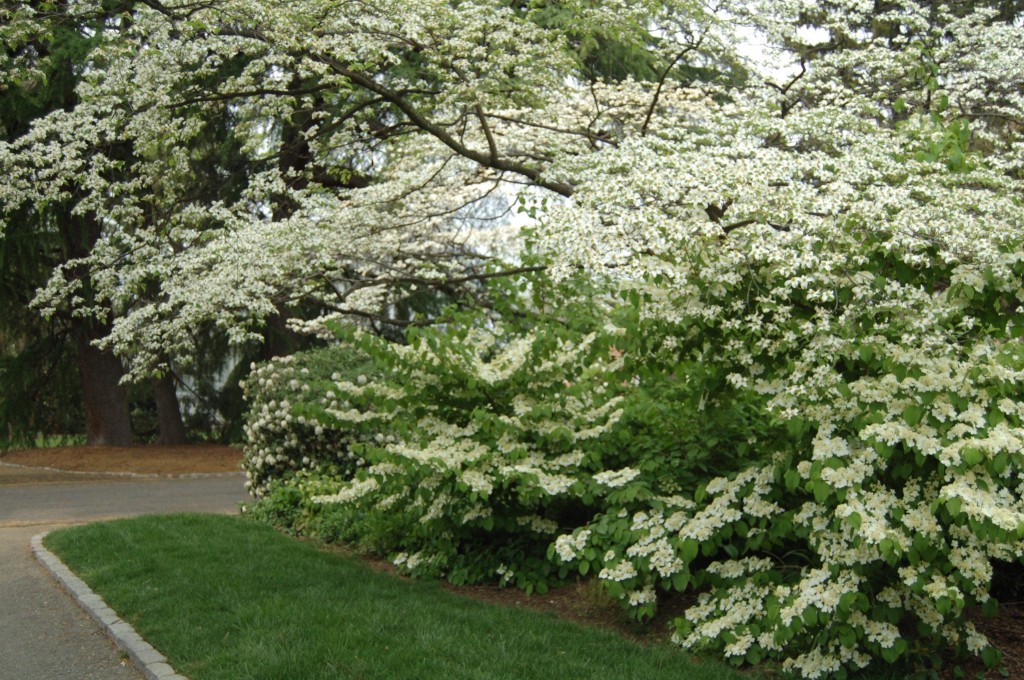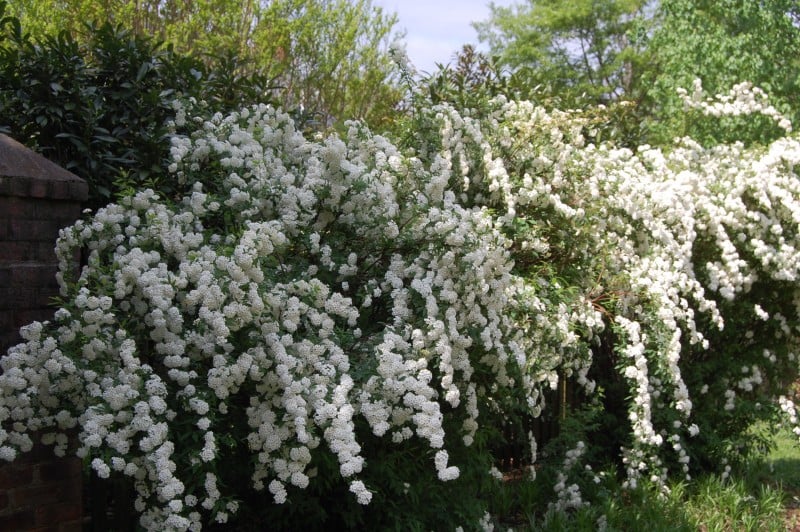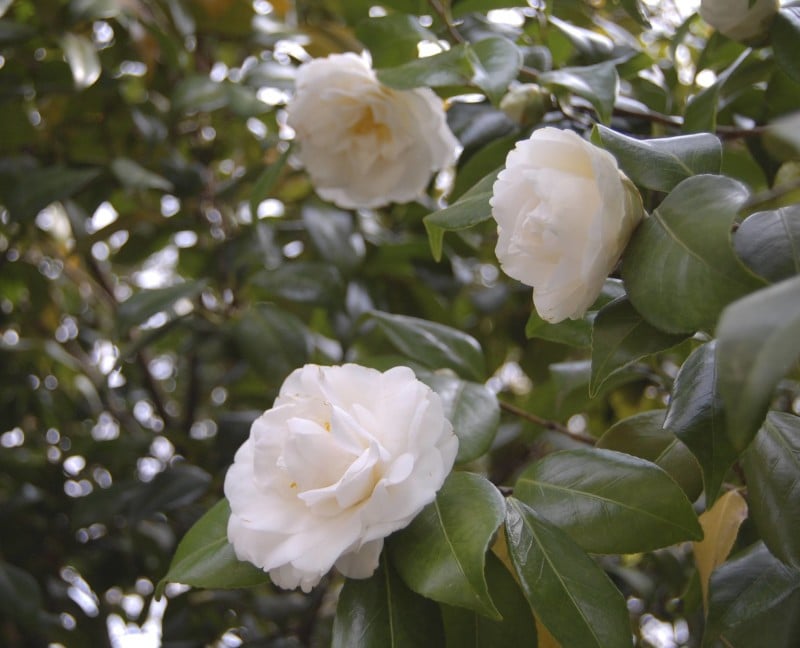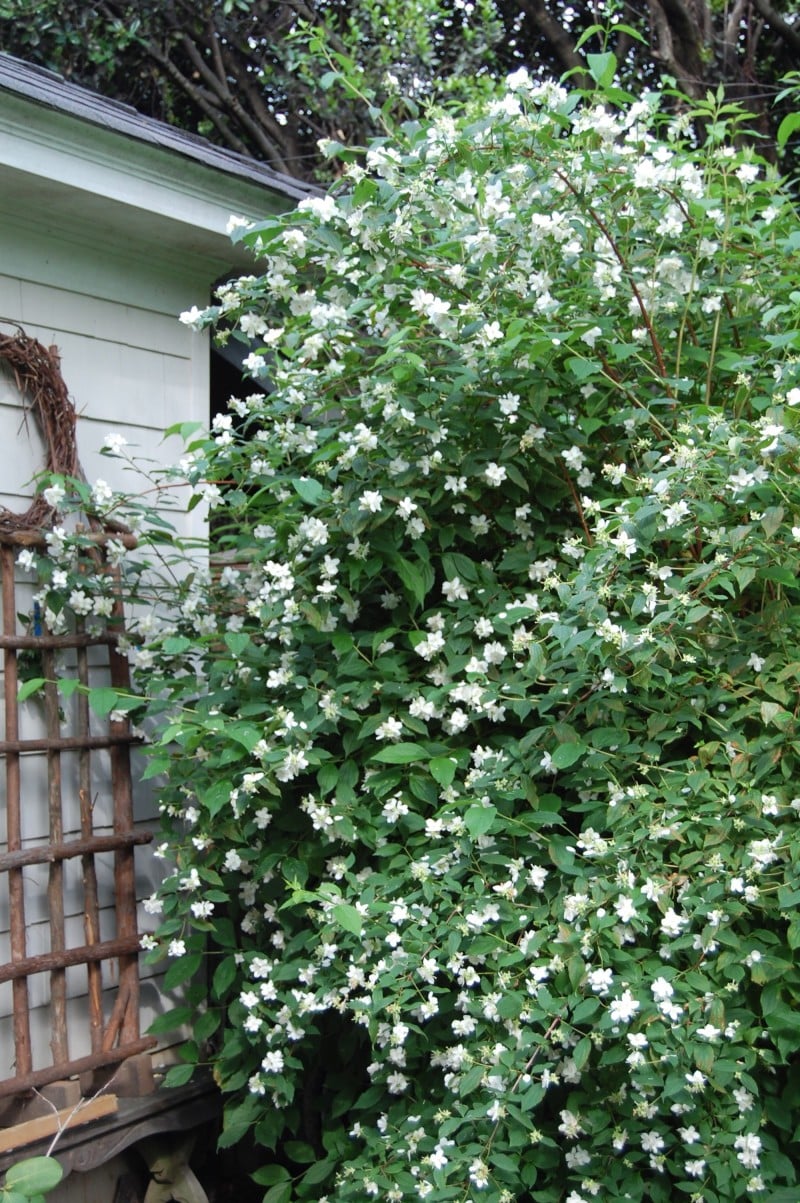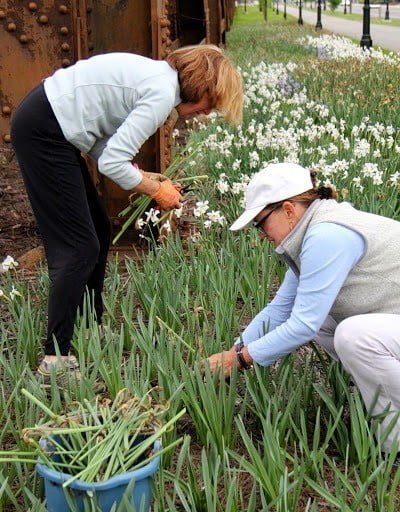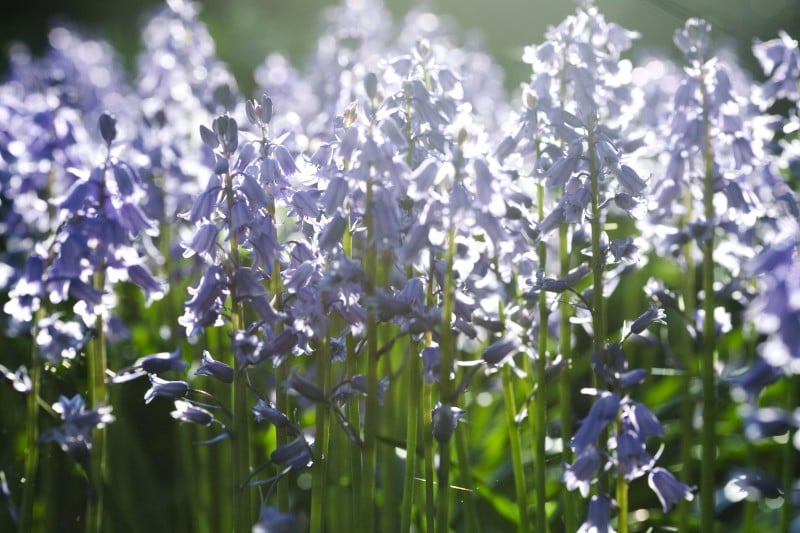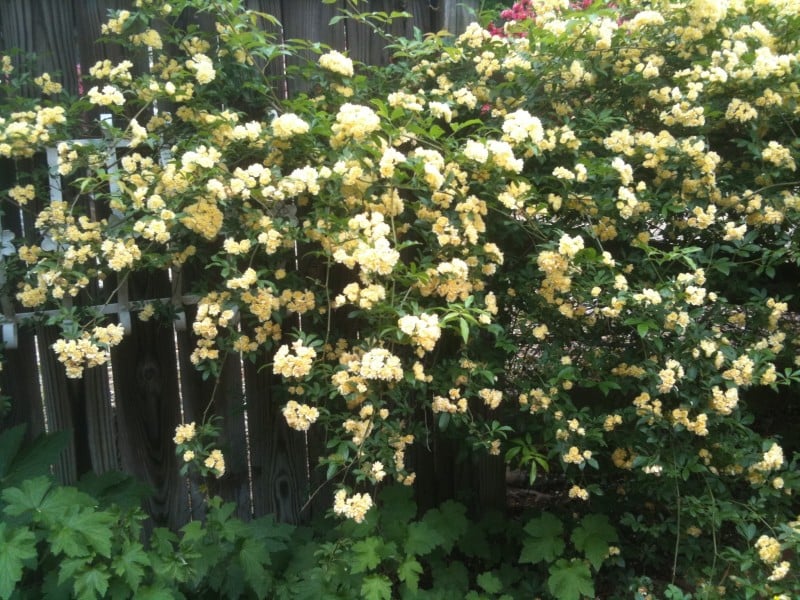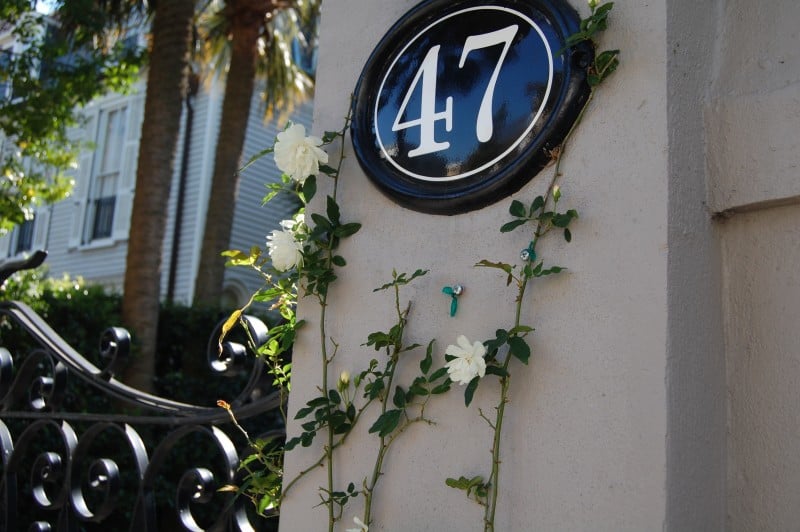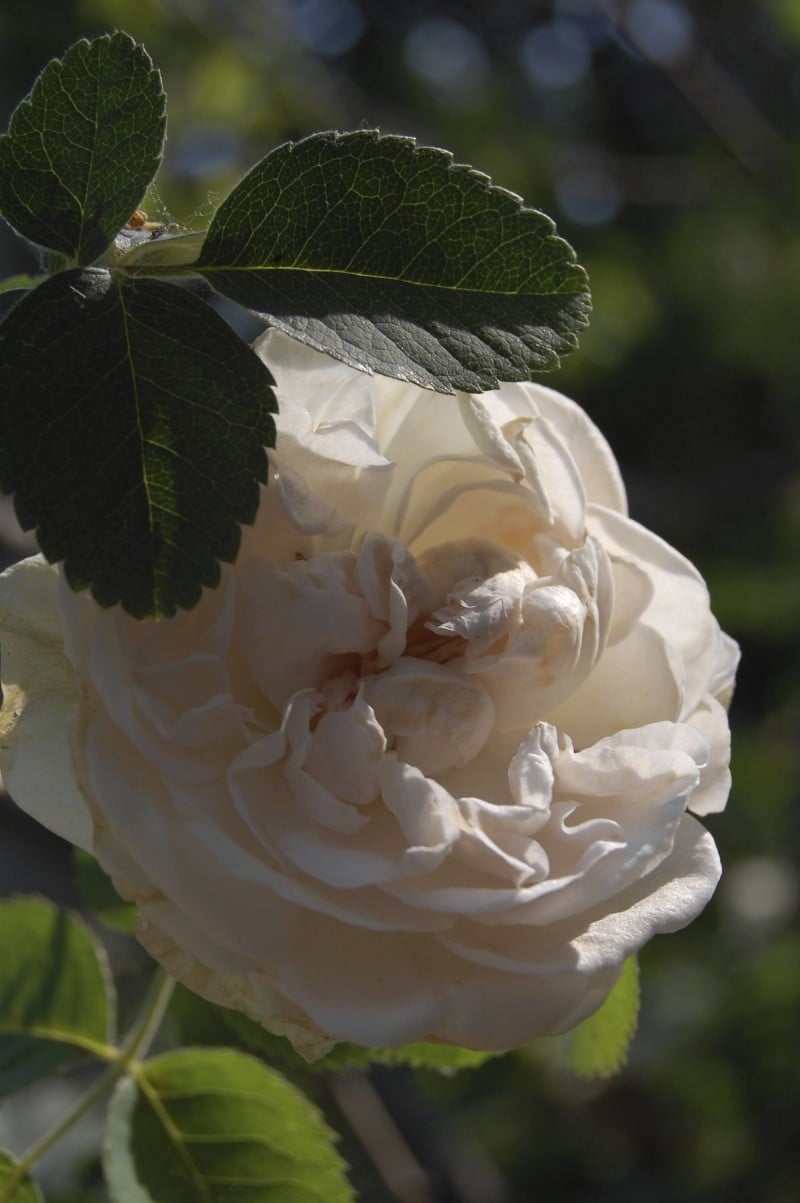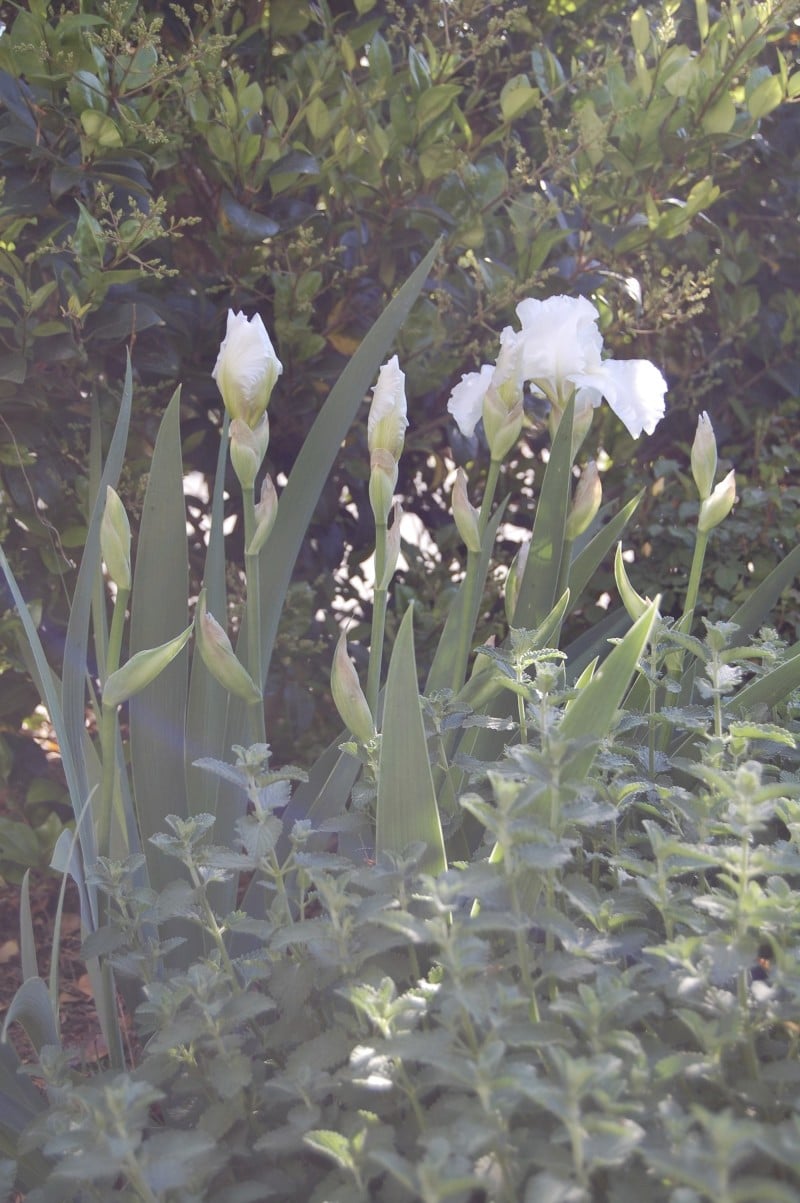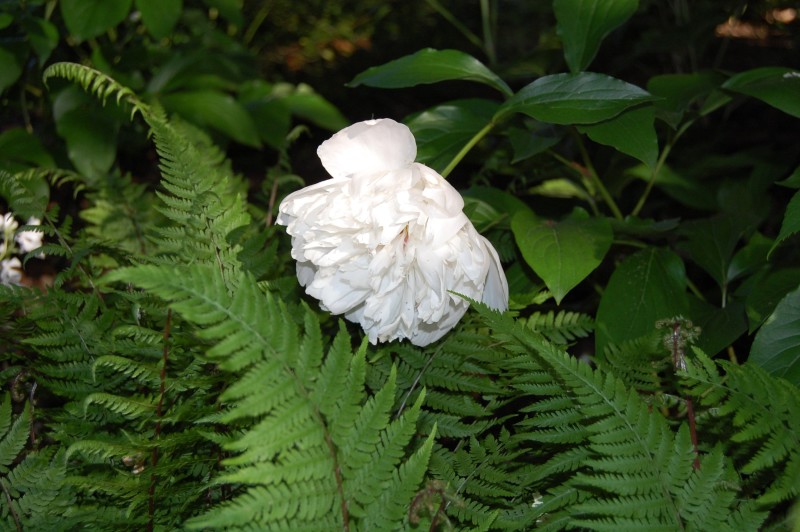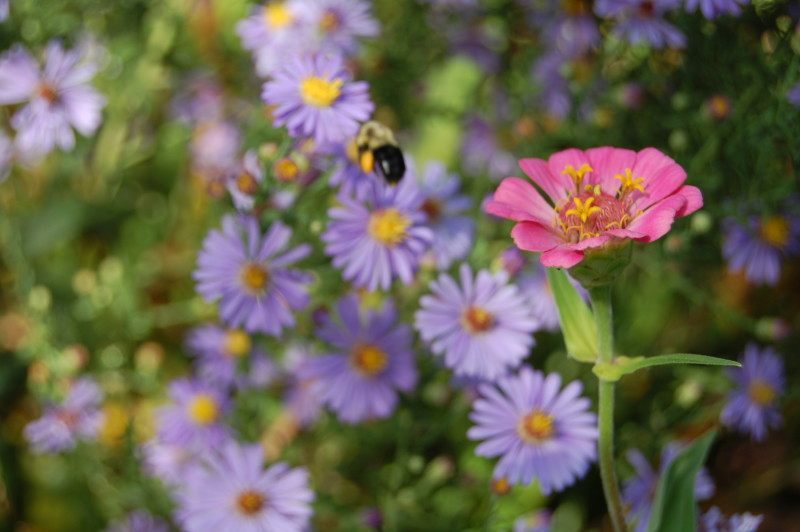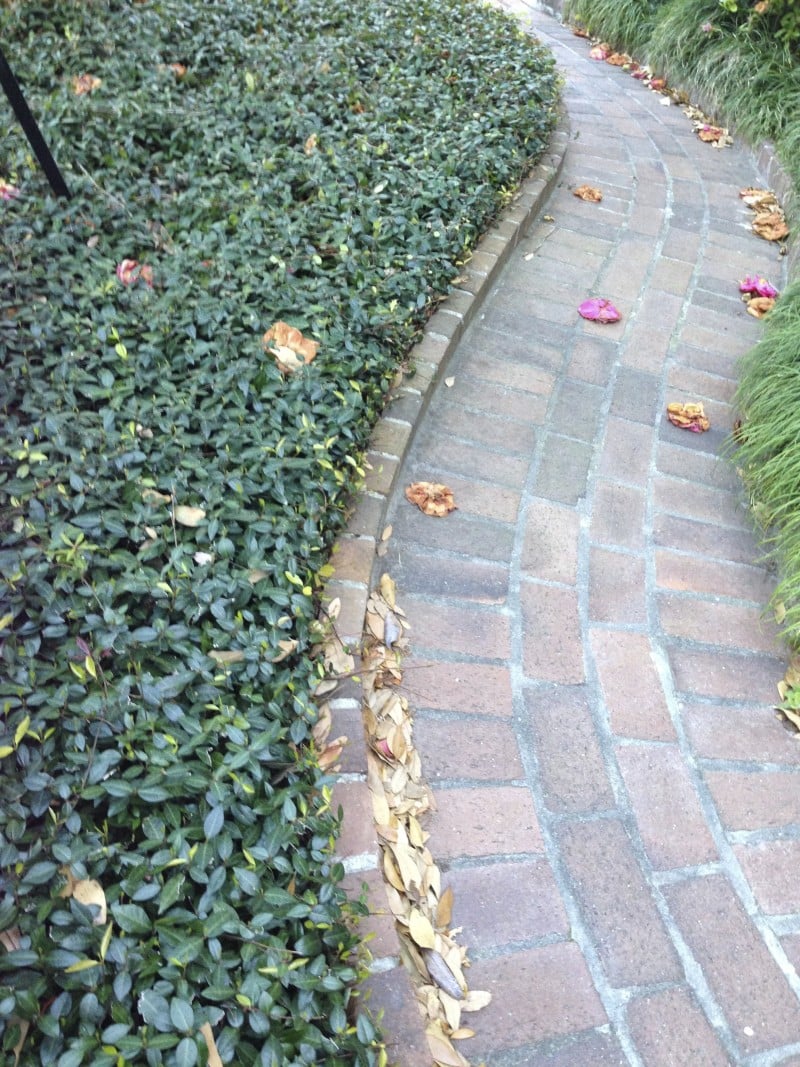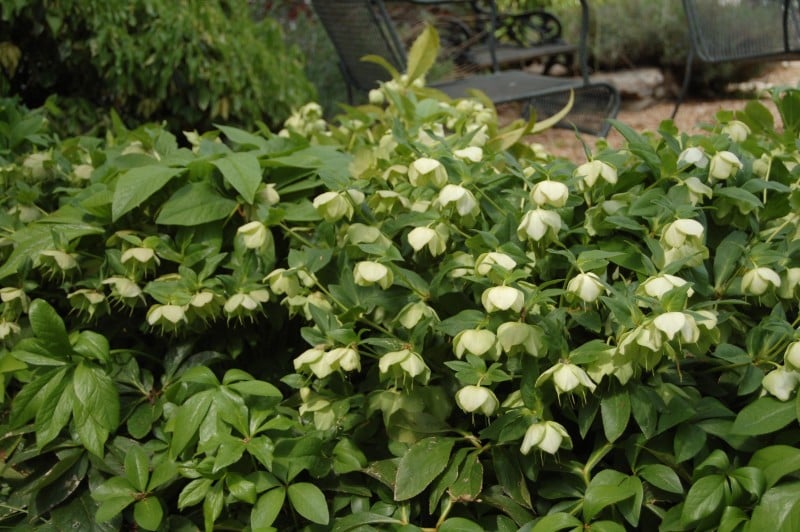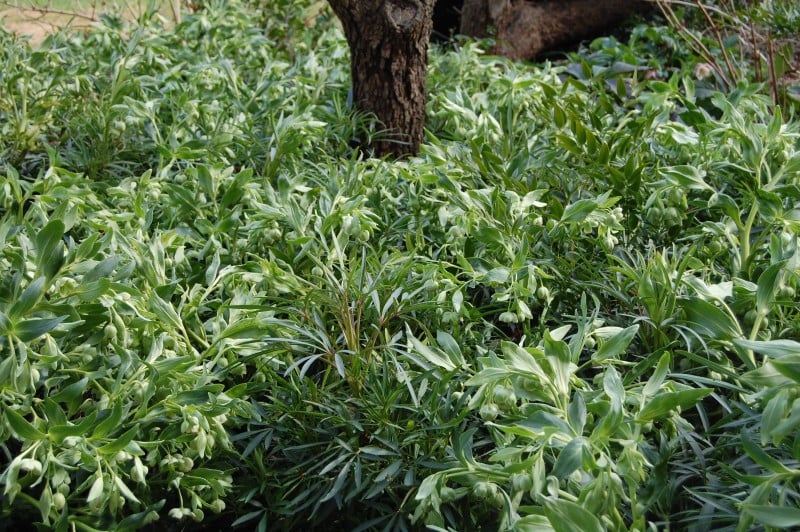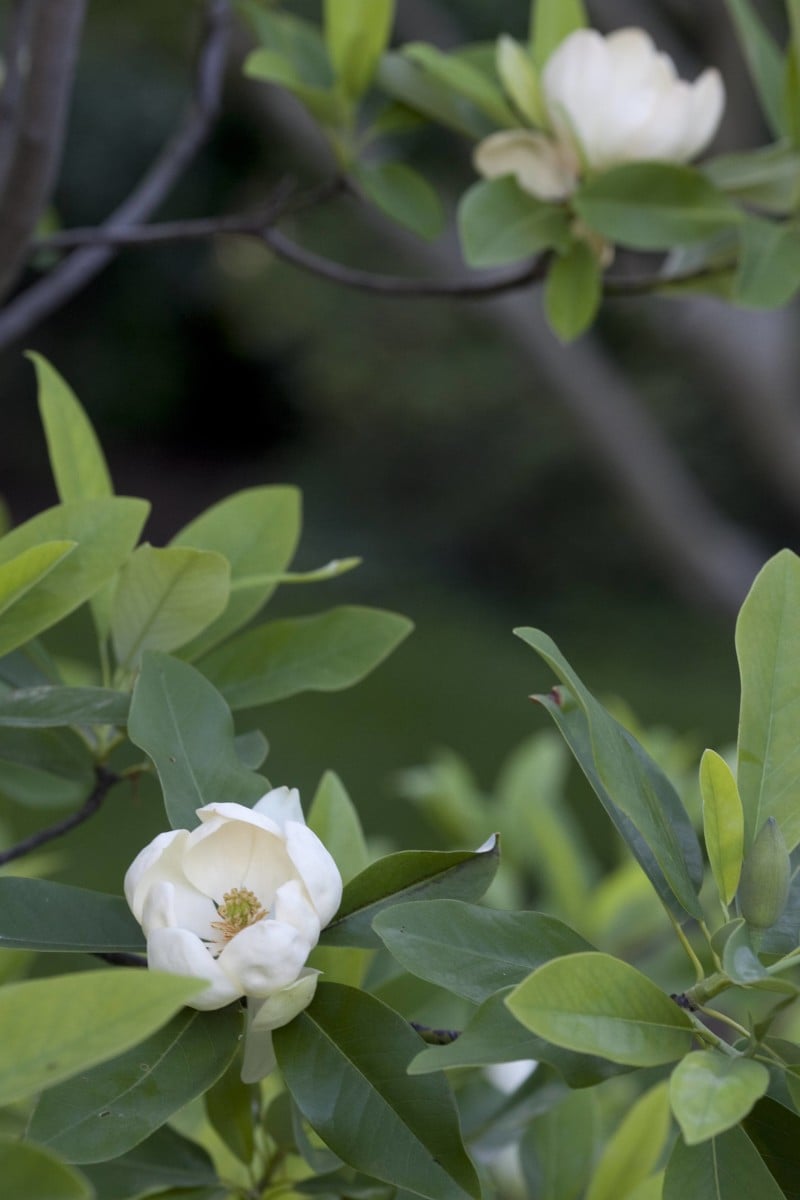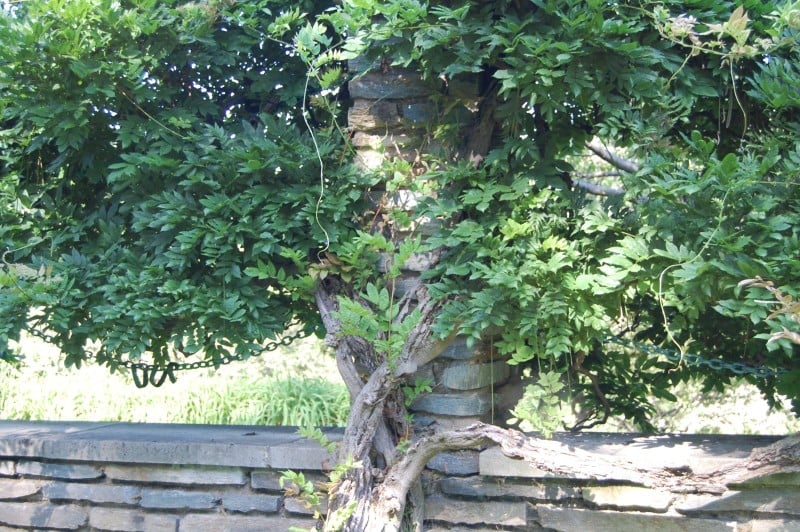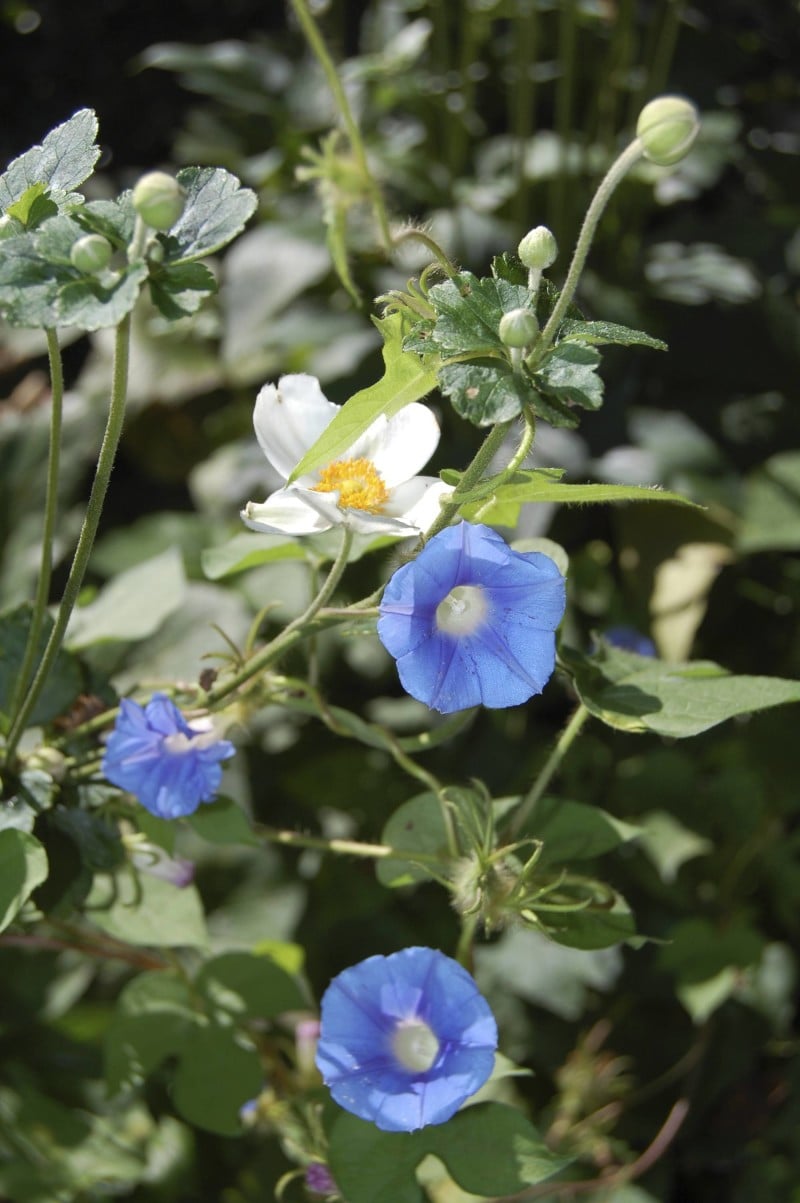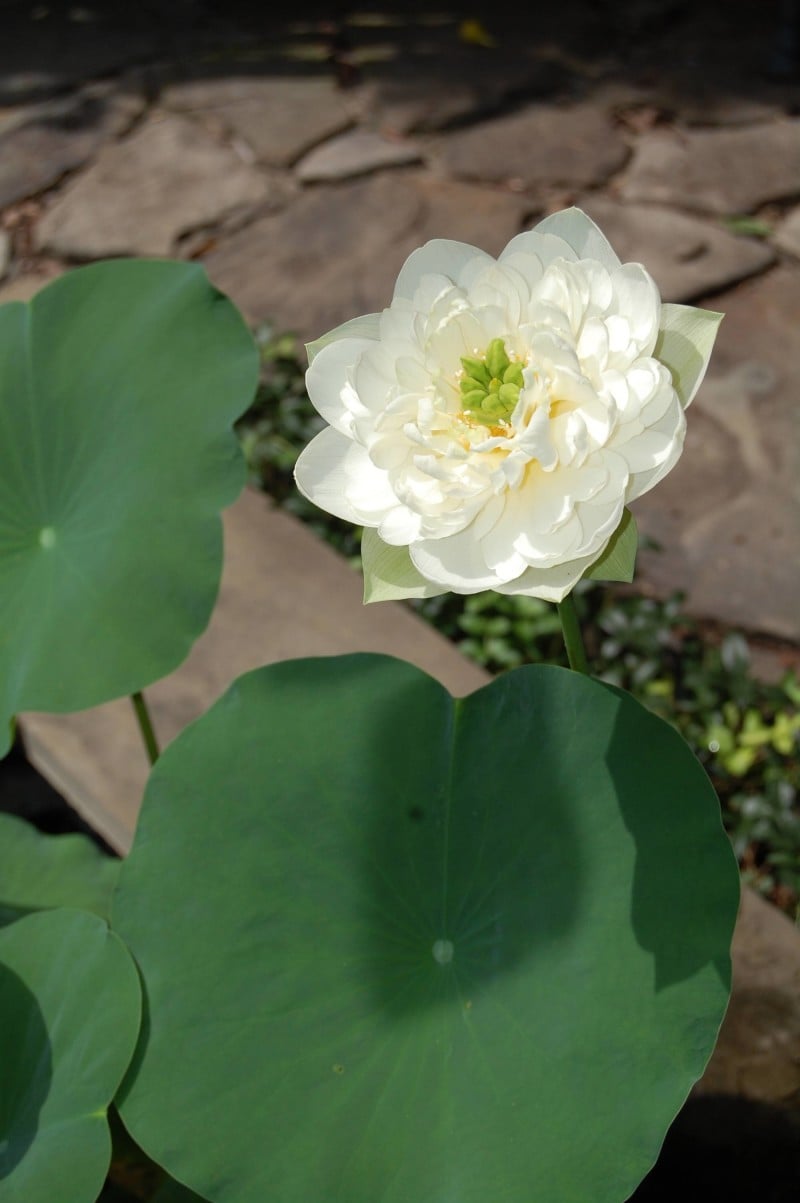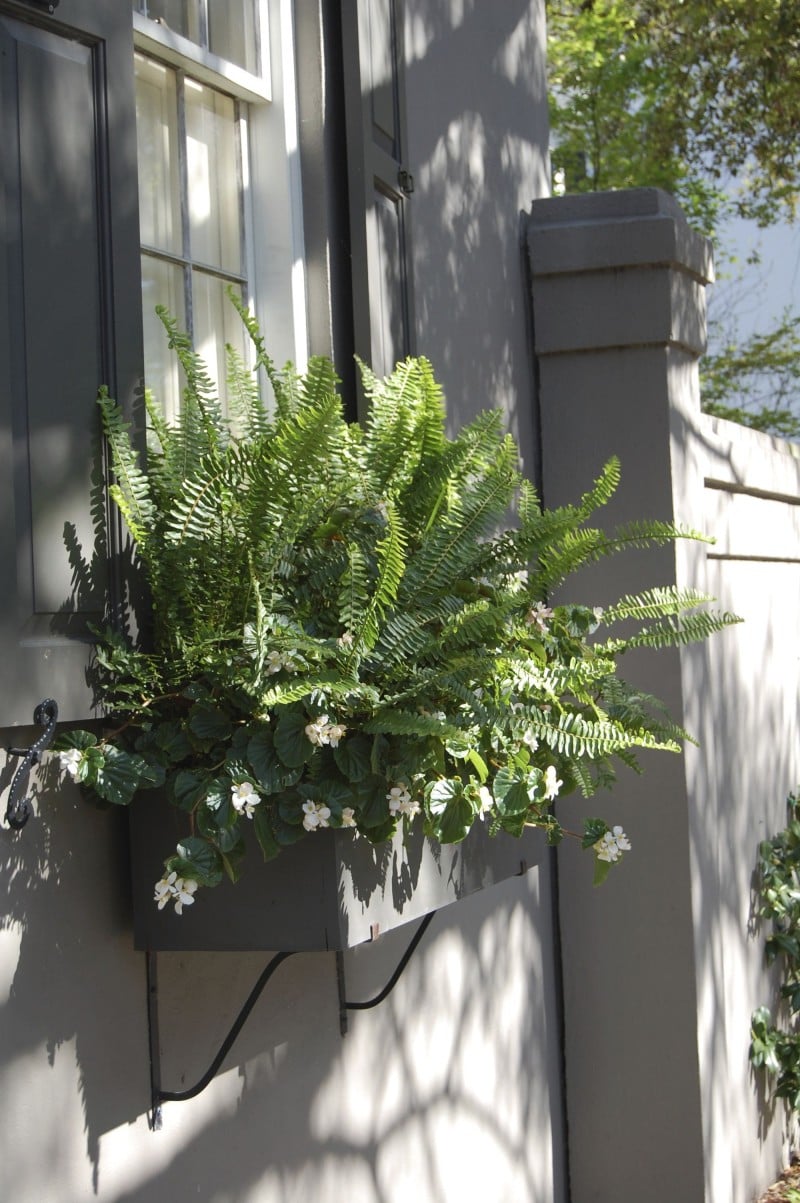HELP STOP THE CRAPE MAIMING!
It’s time for my yearly cry for mercy.
Every winter, my normally low blood pressure shoots skyward, as the Crape Maiming season begins in earnest. I fancy becoming a Crape Maiming vigilante every January, but, after being chased down the street by an ogre of a “pruner” once, I’ve wimped out on that front. So please, help me spread the word that our beloved Crapemyrtles are being senselessly butchered every year, depriving us of one of the pleasures of the cultivated landscape. Join my Facebook and Instagram campaigns, and post your own sightings.
I just missed the perps who committed this horrific maiming. Note the fresh sawdust mulching the ground.
The Crapemyrtle (Lagerstroemia indica) is one of those special trees that provides four seasons of interest. In spring, the leaves emerge late, casting filtered sunlight below. In summer, the flowers cover the tree for up to two months. In fall, most Crapes have outstanding red or orange foliage that persists (much to the chagrin of leaf rakers) almost until December. In Winter, a properly pruned tree is one of the season’s most striking silhouettes in the garden, with its gracefully tapering branches and mottled bark.
WHAT IS CRAPE MAIMING?
Crape maiming is the practice of topping a Crapemyrtle during dormancy. Crape Murder is the most popular term used for this butchery. The lawyer in me calls it maiming, because the severe pruning rarely kills these tough trees. Instead it disfigures them.
Crape maiming occurs when a pruner tops — or prunes — each of the tree’s branches, stopping short of a bisecting branch. You see the cut backs in varying degrees. The tree above has the antlers look.
My guess is that the landscaper who pruned the trees pictured above, at Short Pump Town Center, thinks he did not commit Crape Maiming, because he only cut the spent flower stalks. But he is wrong. This is also maiming, and it ruins what could be a beautiful winter vista. The only thing this pruning accomplished is putting extra money in the landscaper’s pockets for doing unnecessary work.
I don’t know whether to laugh or cry at this hatchet job.
WHY OH WHY DO THEY DO IT?
Why the maiming? I hear two excuses. First, it is claimed that a Crape must be topped so that it will produce more blooms. At some point, somebody put the Crape in the category of Butterfly Bush (Buddleia davidii), Beautyberry (Callicarpa americana), Annabelle Hydrangea (Hydrangea arborescens) and Limelight Hydrangea (H. paniculata). Those plants do benefit from aggressive late winter/early spring pruning. But a Crape, if planted in the right place, will bloom profusely year after year without such topping or aggressive hacking. We don’t top Dogwoods, another tree with a graceful branching habit, so why do we do it to Crapes?
Second, Crapes are topped because they are too big for the places they were planted. If a shrub or tree needs to be pruned on a yearly basis because it is outgrowing its spot, it needs to be replaced with a plant that has room to grow to its mature height and width.
The beautiful grove of Crapemyrtles above, at Furman College, are the result of proper Crape pruning.
HOW TO PRUNE A CRAPE
This pruning, during the tree’s dormancy, will give your Crape a light, airy appearance:
1. Cut any suckers to the ground that grow from the base of the tree.
2. Cut out any diseased or dead branches.
3. Prune any branch crossing or rubbing against another.
4. Remove shoots growing into the center of the tree, and remove any wayward, awkwardly growing branches to create more open space and allow sunlight and air to penetrate.
5. Cut back spindly branches at the intersection of a lower growing branch.
Sweetbay Magnolia (Magnolia virginiana), Saucer (or Tulip) Magnolia (Magnolia x soulangeana), Japanese Maple (Acer palmatum) and Chastetree (Vitex agnus-castus), pictured below, also benefit from these pruning techniques.
The Crapemyrtle below, in Charleston, South Carolina, has been selectively thinned to allow it to grow close to the house and the sidewalk.
The Crape below exemplifies the dormant look of a tree that is topped yearly. The poor tree is bracing itself for this year’s hacking.
What would you rather see in the winter landscape?
This?
Or this?
CRAPE CULTURE
Crapemyrtles thrive in full sun and well drained soil. They benefit from an amendment of the soil with compost, but they do fine in average soil too. Once established, Crapes are drought-tolerant.
One word of caution when planting a Crapemyrtle: avoid planting it near terraces, driveways and pools. I hated Crapes when I lived in Charleston, because I parked under one at the courthouse. The dark pink blooms covered my car everyday, the humidity giving it a nice decoupage look.
While every tree sheds something at some time, Crapes shed spent blooms beginning in July (depending on the cultivar and that season’s weather), continuing into fall, followed soon after by the leaves, which also shed over a long period of time. Thus, you will be continually sweeping or blowing your terrace or driveway from July to November. Better to plant the Crape where you can enjoy its beauty without cursing its natural cycles.
CHOOSE THE RIGHT CULTIVAR FOR YOUR GARDEN
There are scores of cultivars from which to choose. Crape cultivars are available as shrubs, small trees and towering 30 footers. Bloom colors range from white to pink to purple. Take note of a tree’s mature height and width, its color, whether it has exfoliating bark, and whether it is resistant to disease when choosing your Crape.
Here are a few exceptional choices, all with good disease resistance:
Osage: 10-20 feet, clear pink
Sioux: 10-20 feet, vibrant pink
Natchez: over 20 feet, white
Tuskegee: over 20 feet, dark pink
Muskogee: over 20 feet, lavender
Biloxi: over 20 feet, pale pink
Choctaw: over 20 feet, bright pink
For more information on selection and care of Crapemyrtles, check out the Virginia Cooperative Extension Service’s report.
For those of you who wonder whether a Crape that has been maimed can be rejuvenated, I offer you this tree in my back yard. Note the “knuckles” in the tree where cuts were made many years ago. While this tree will always bear the scars of the long-ago hatchet job, it is shaping up pretty nicely (but is in need of thinning the spindlies). As for the ragamuffins dwelling in the tree, they’re Trouble.
[custom-related-posts title=”Related Posts” none_text=”None found” order_by=”title” order=”ASC”]
















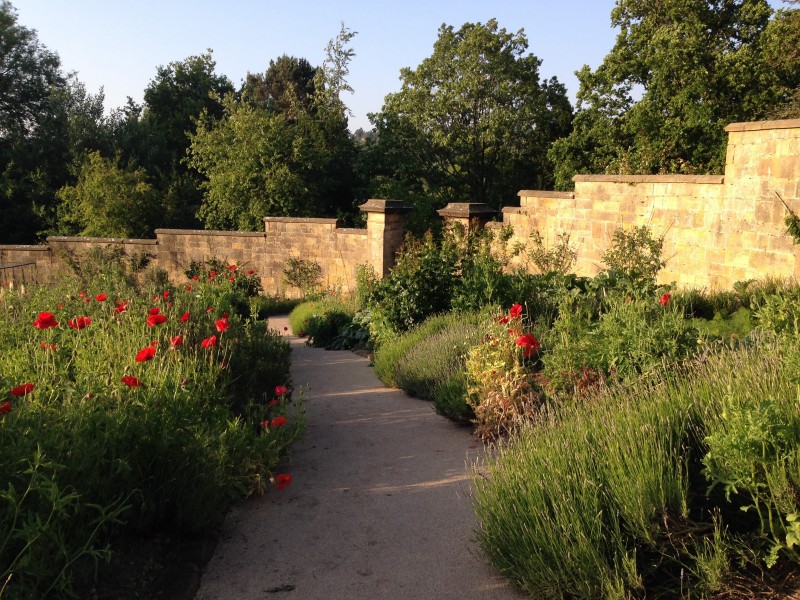
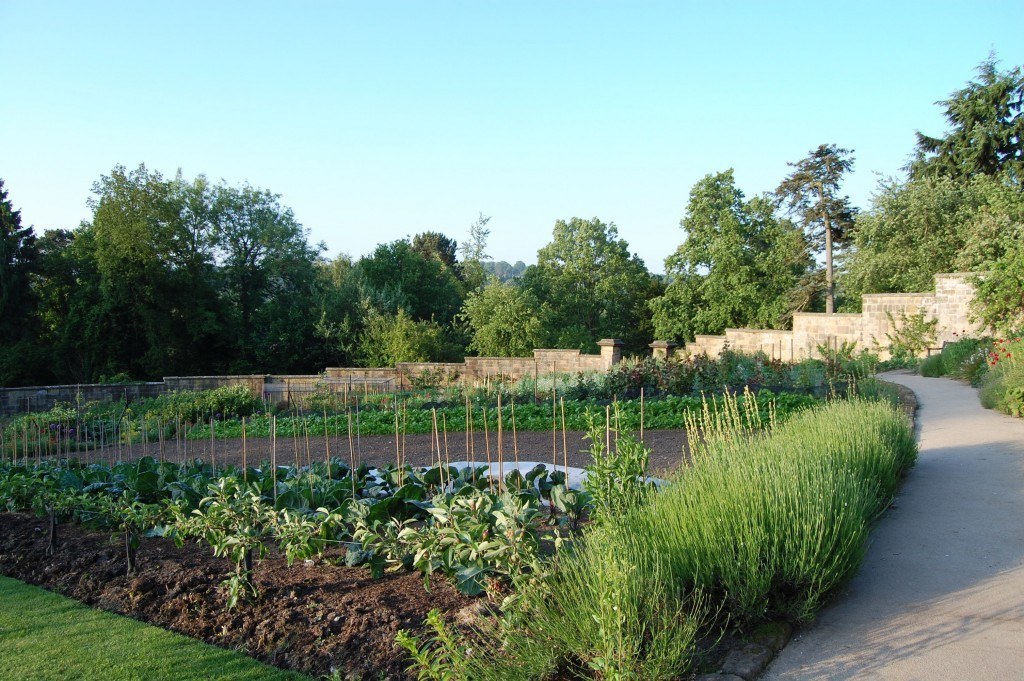
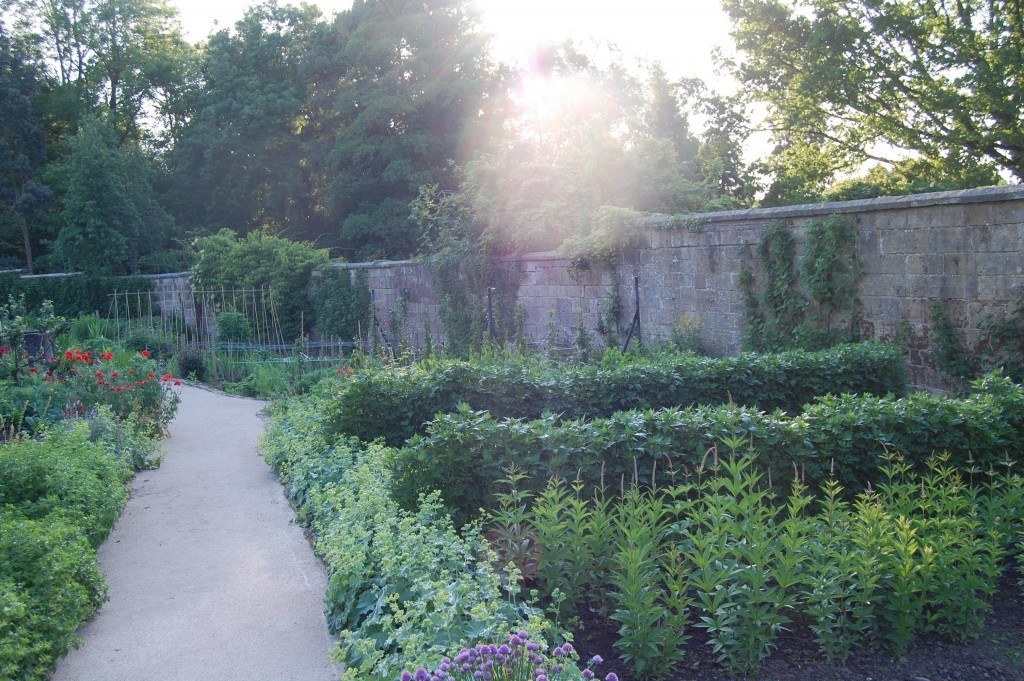
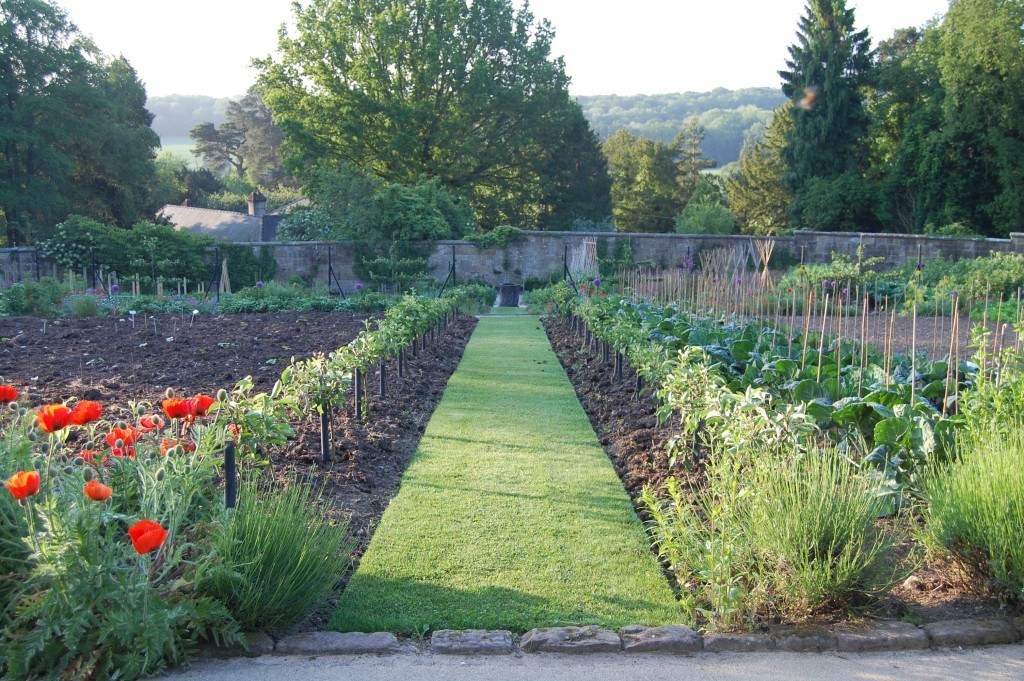
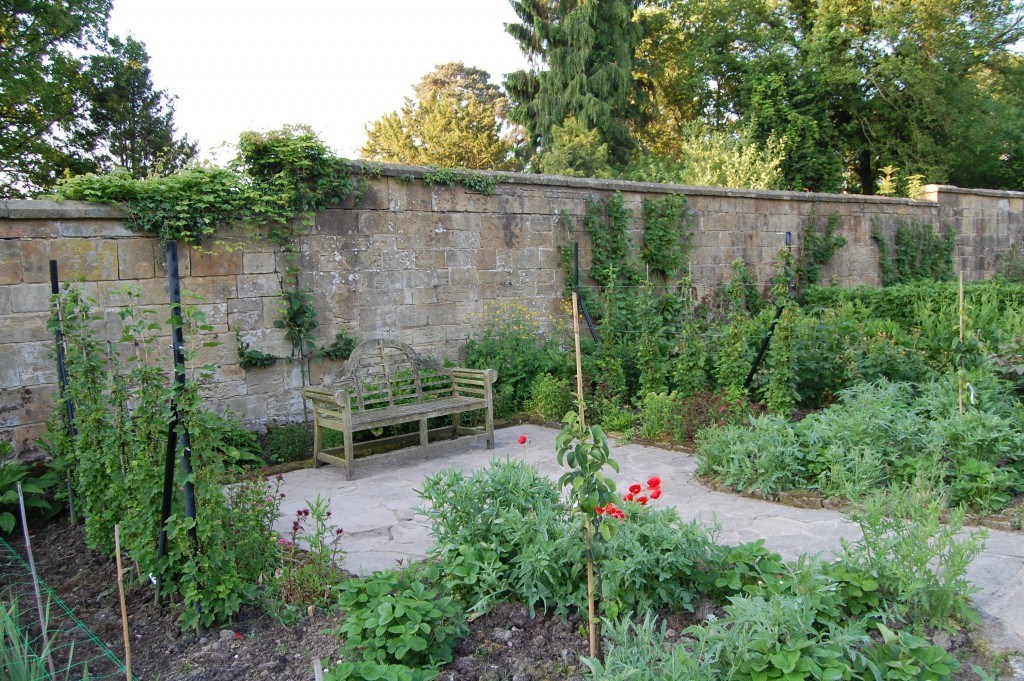
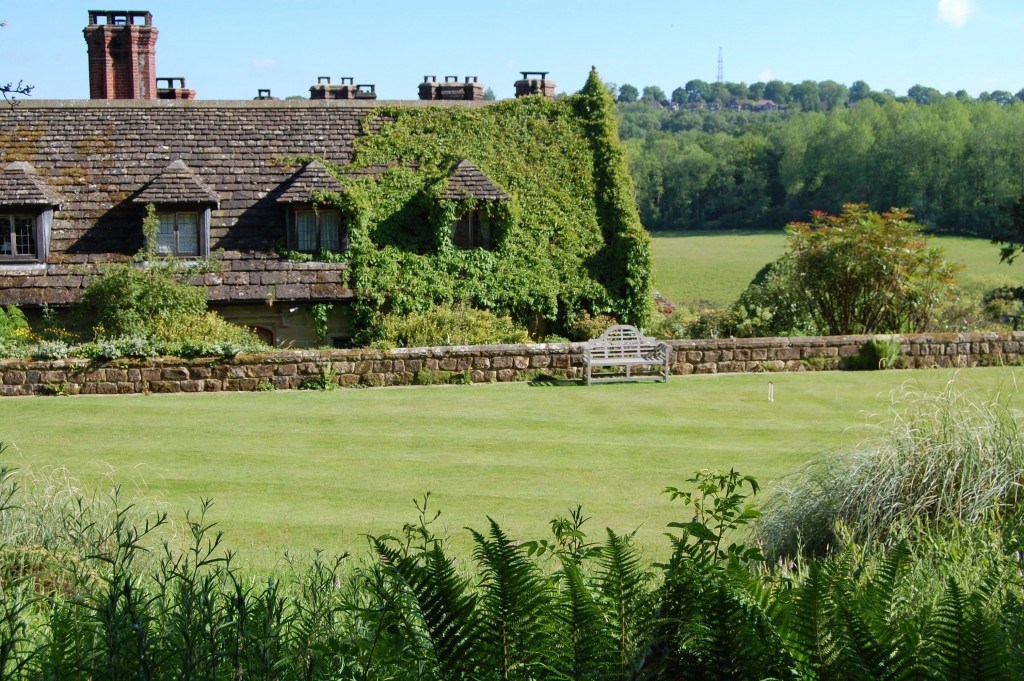
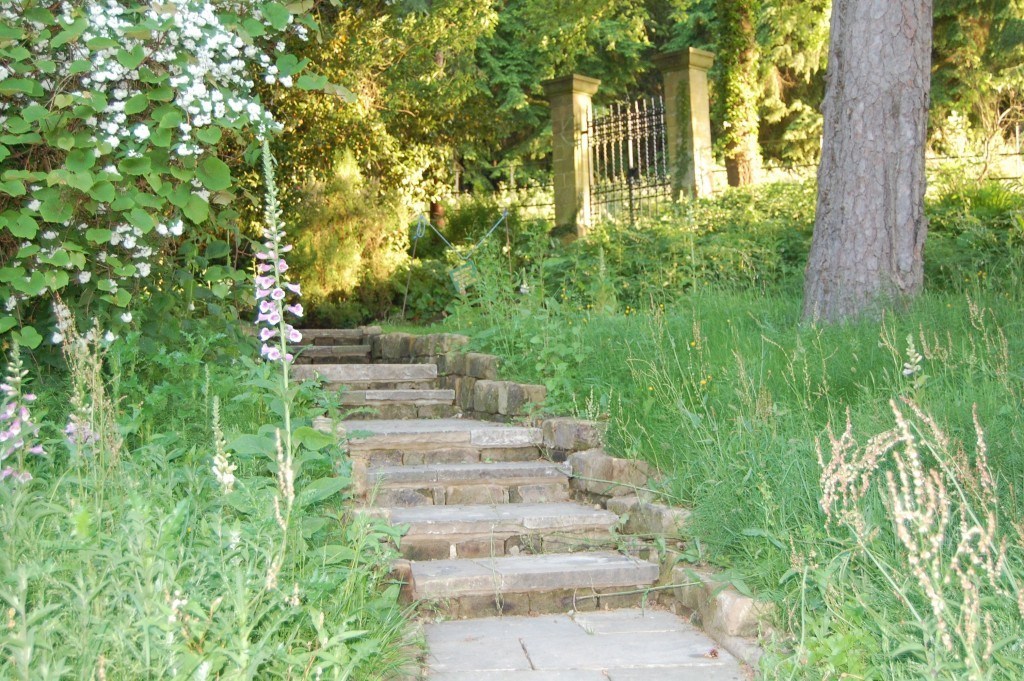
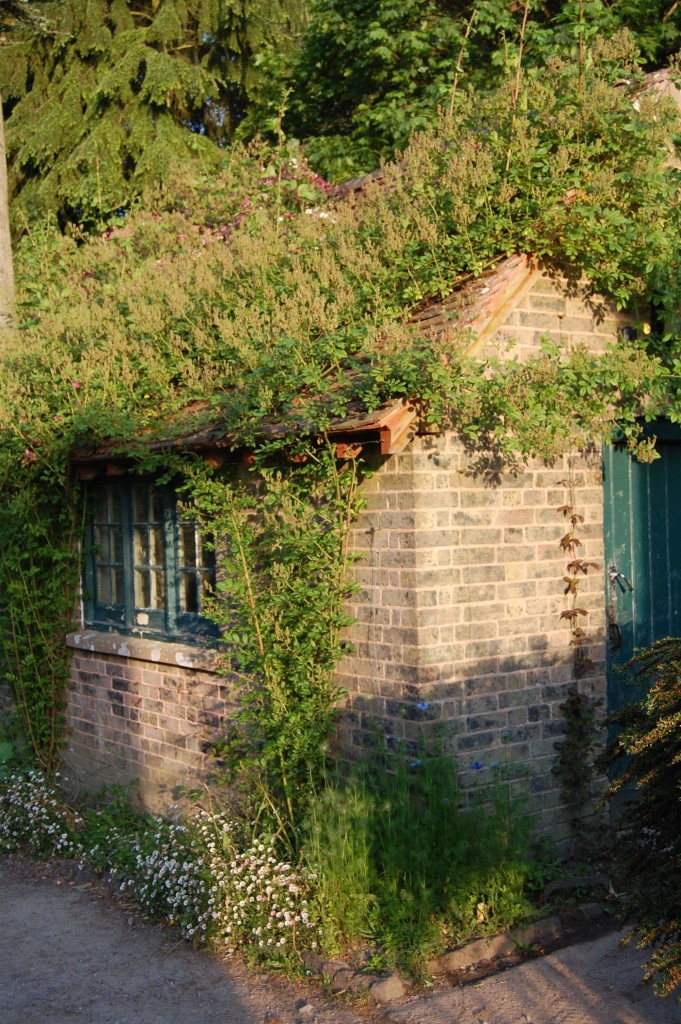
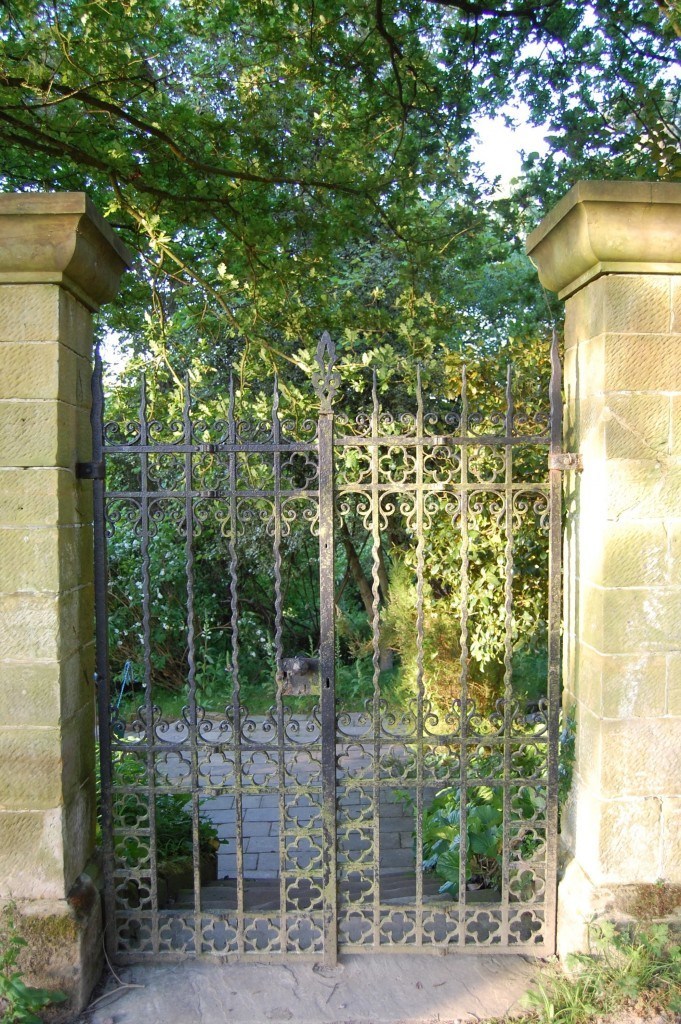
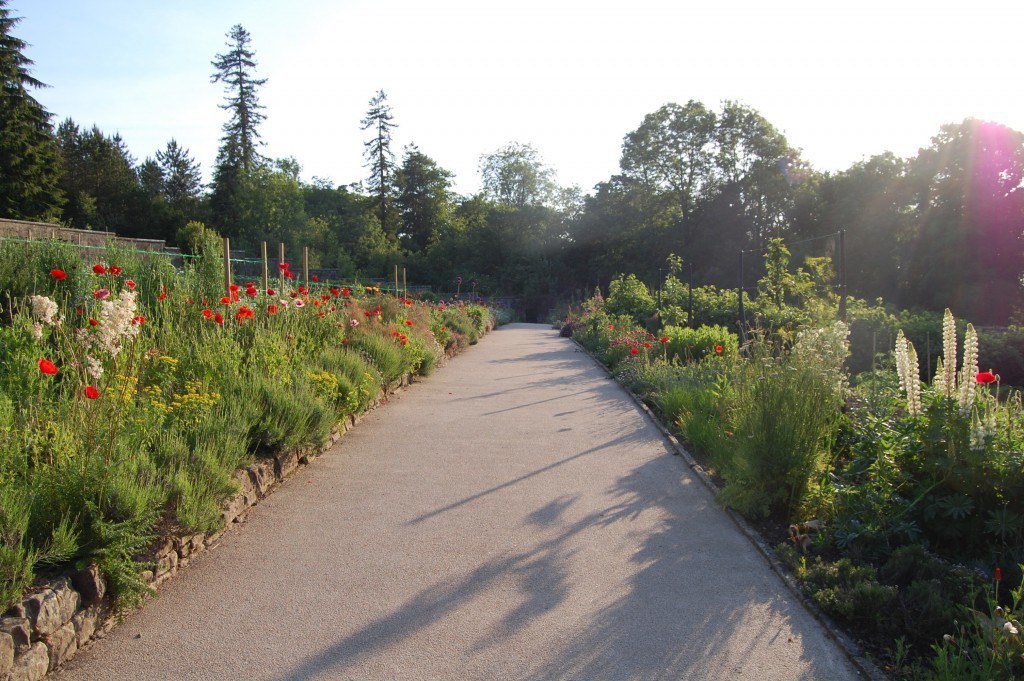
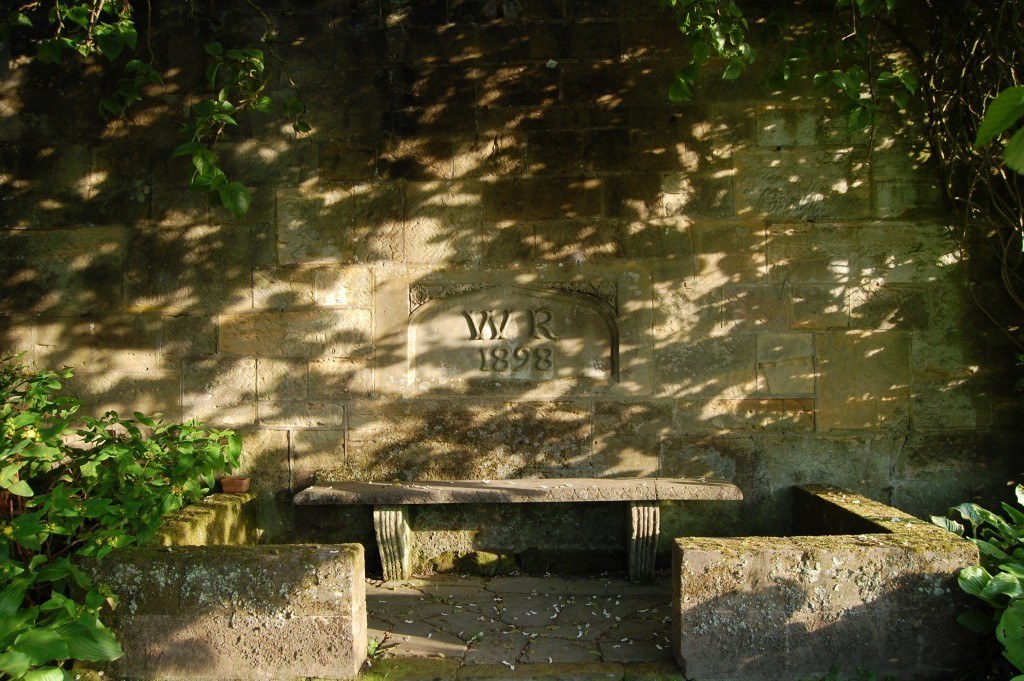
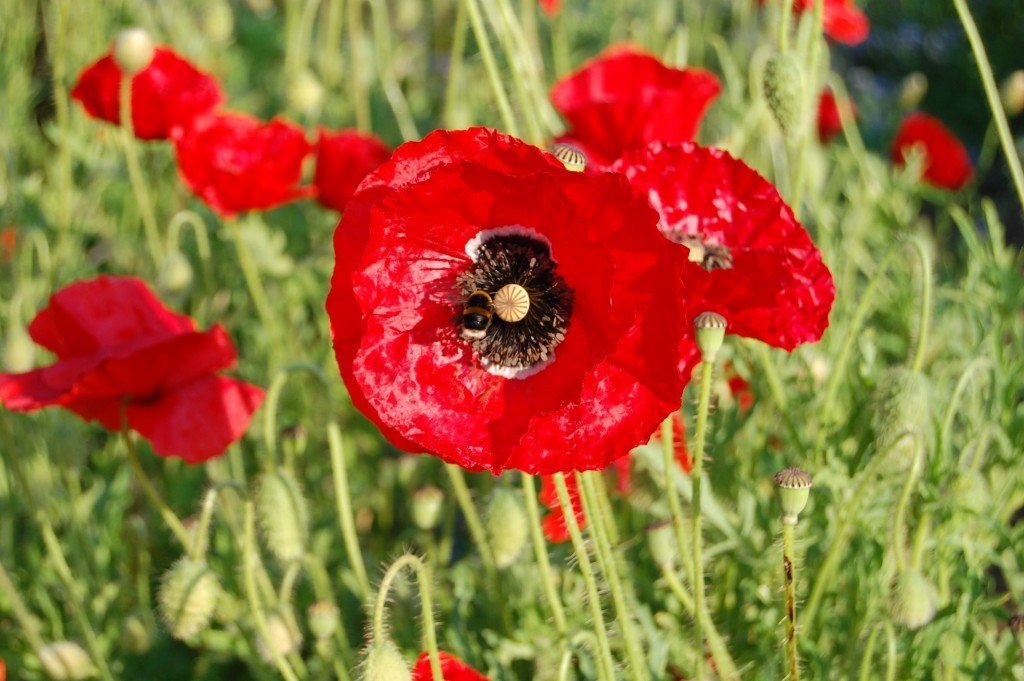
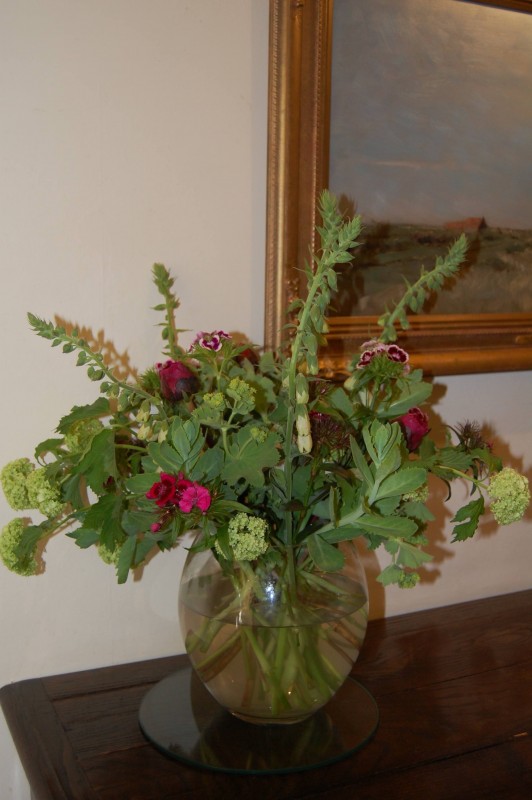
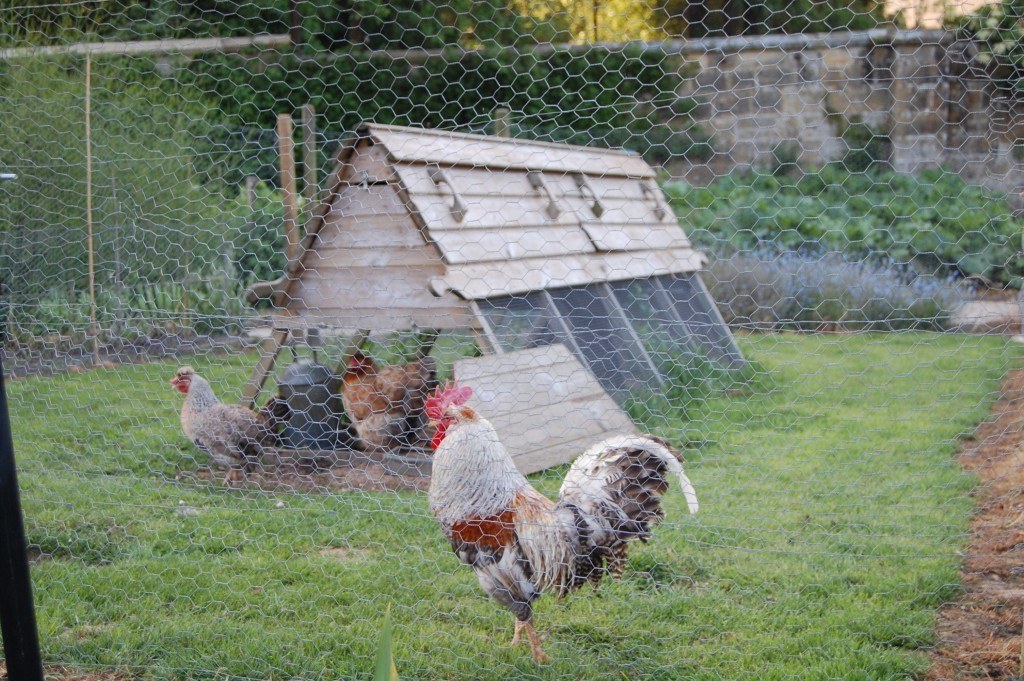
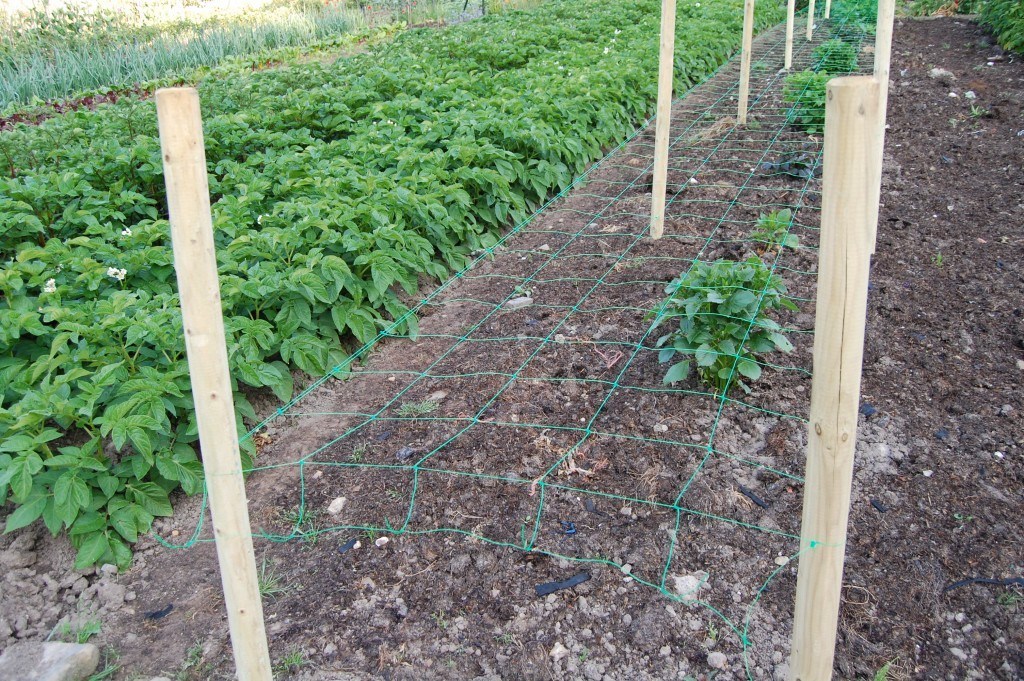
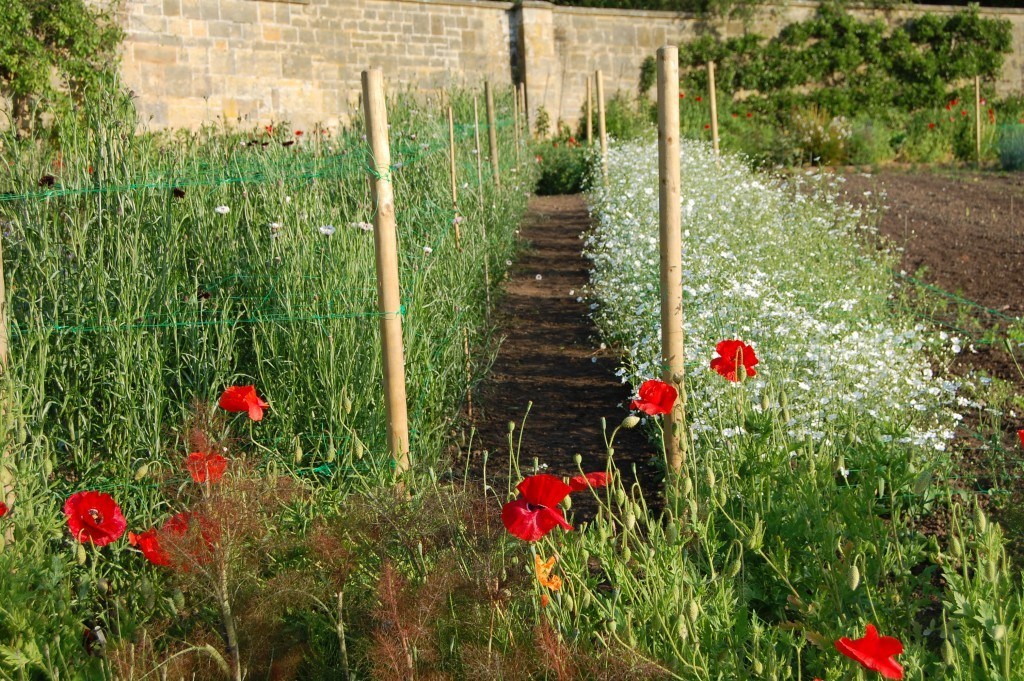
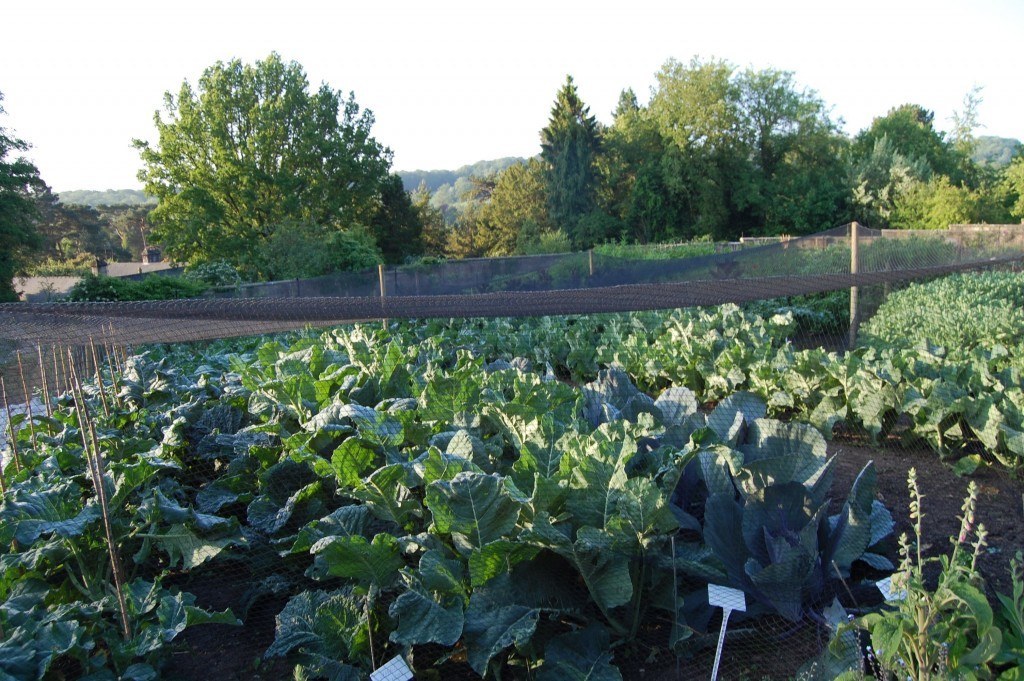
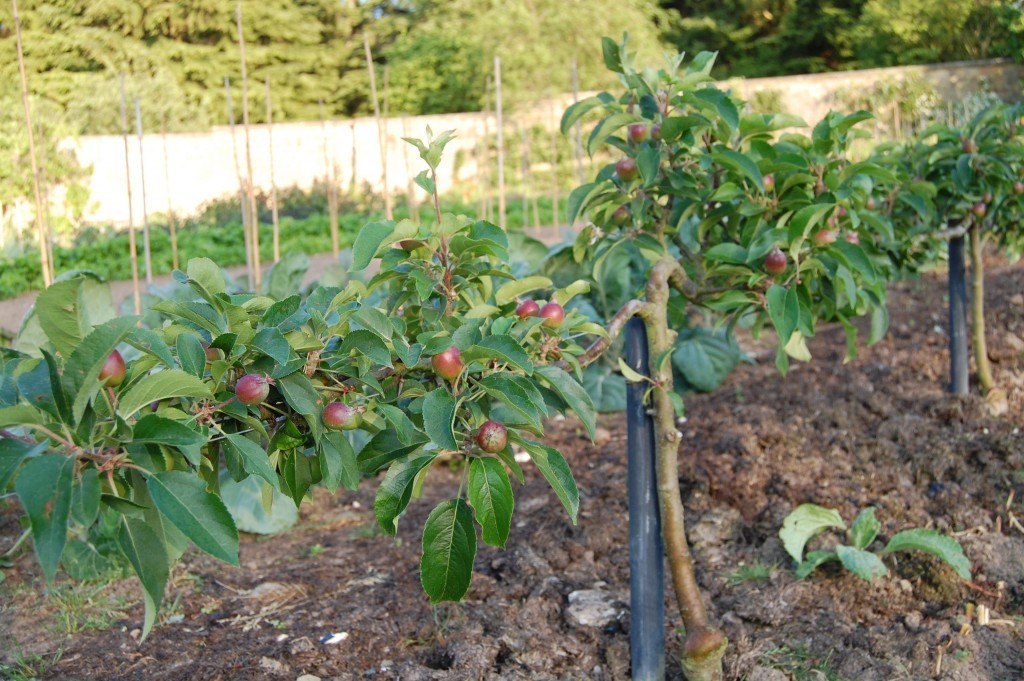
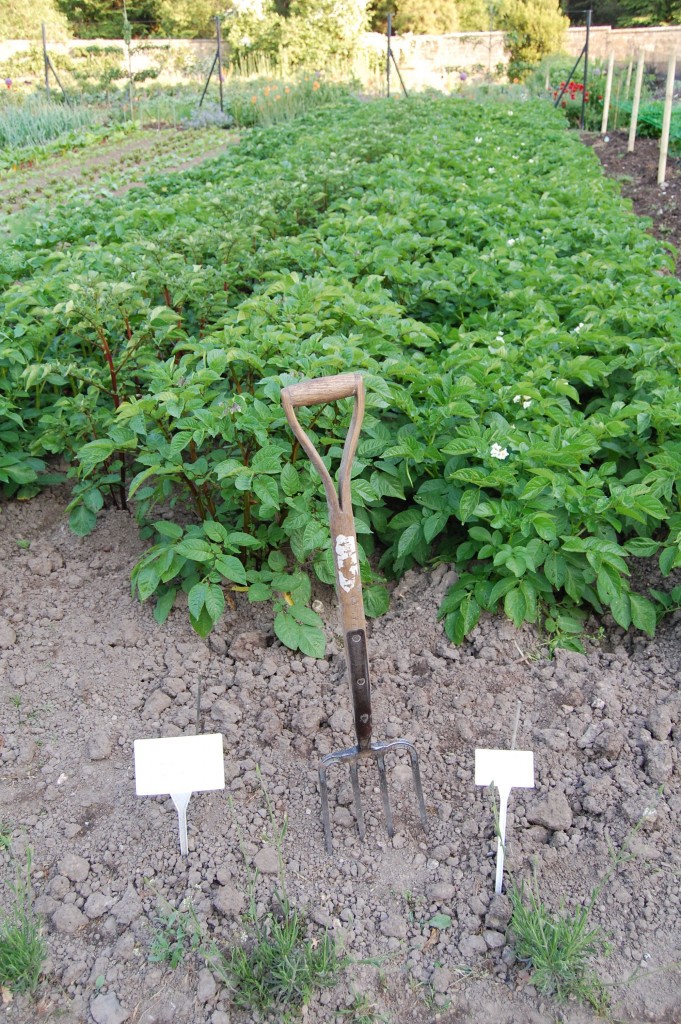
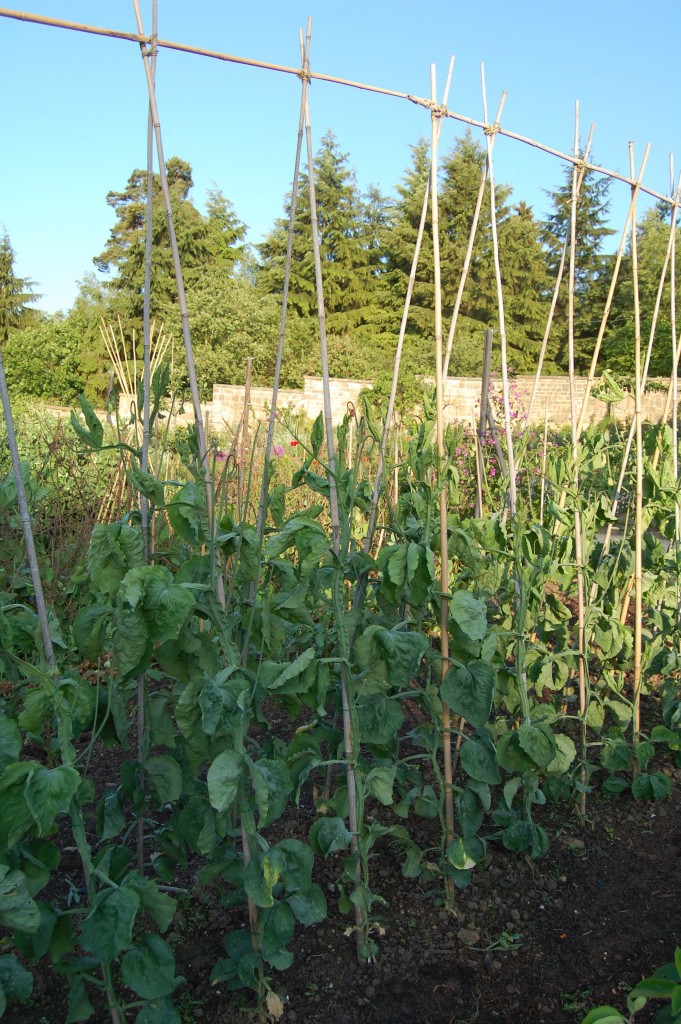
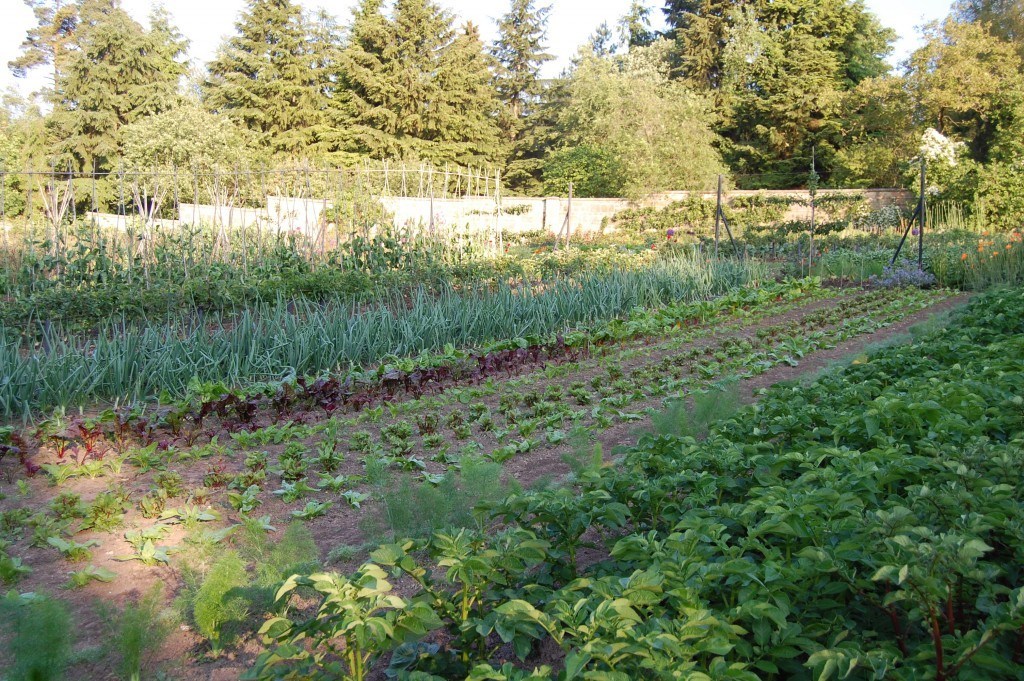
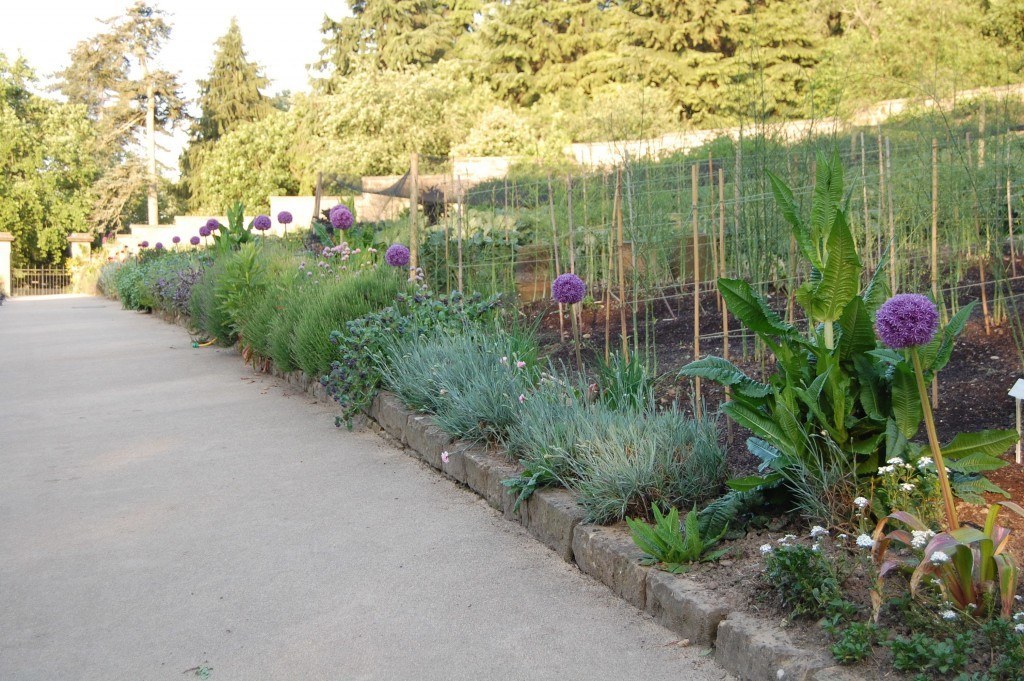

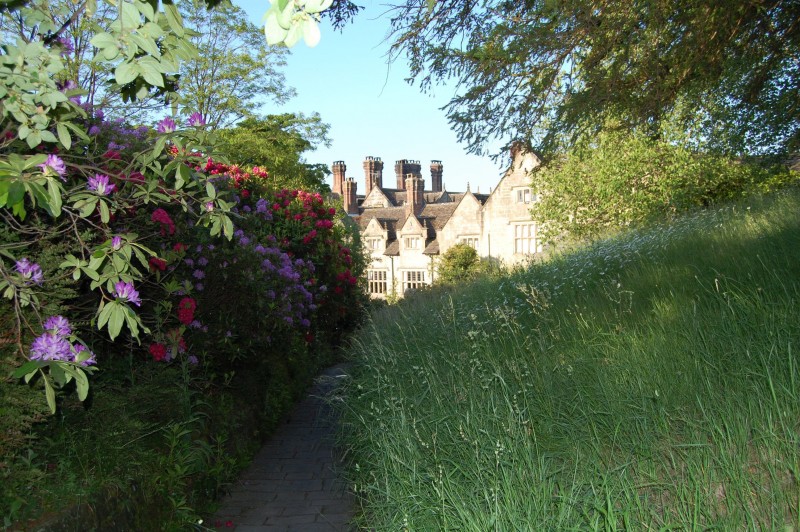 In 1884, William Robinson began a decades-long journey to put his revolutionary landscape philosophy into practice at Gravetye Manor in England’s lush Sussex County. When he began his work, the vast grounds of the manor house, built in 1598 by Richard Infield, had been used primarily for livestock grazing. Vast woodlands made up much of the remainder of the estate.
In 1884, William Robinson began a decades-long journey to put his revolutionary landscape philosophy into practice at Gravetye Manor in England’s lush Sussex County. When he began his work, the vast grounds of the manor house, built in 1598 by Richard Infield, had been used primarily for livestock grazing. Vast woodlands made up much of the remainder of the estate.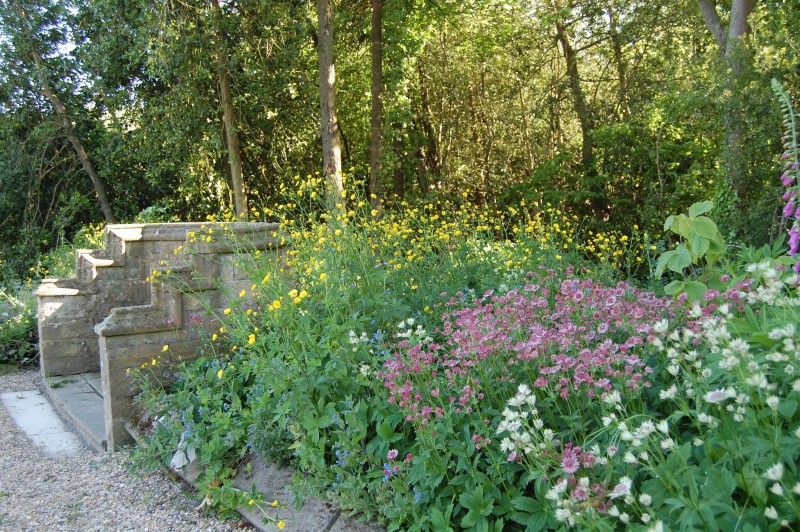


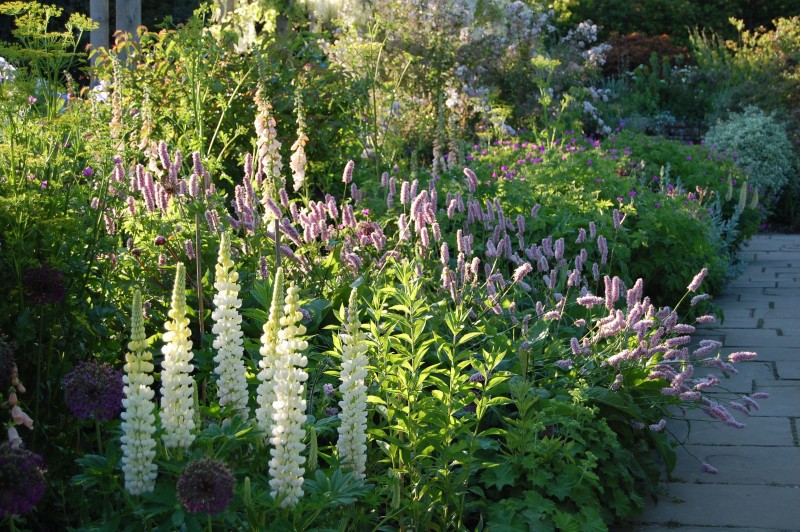
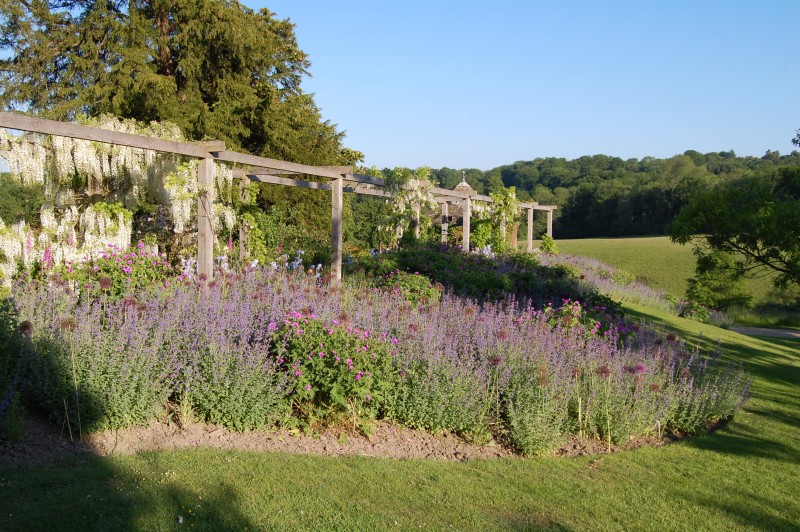
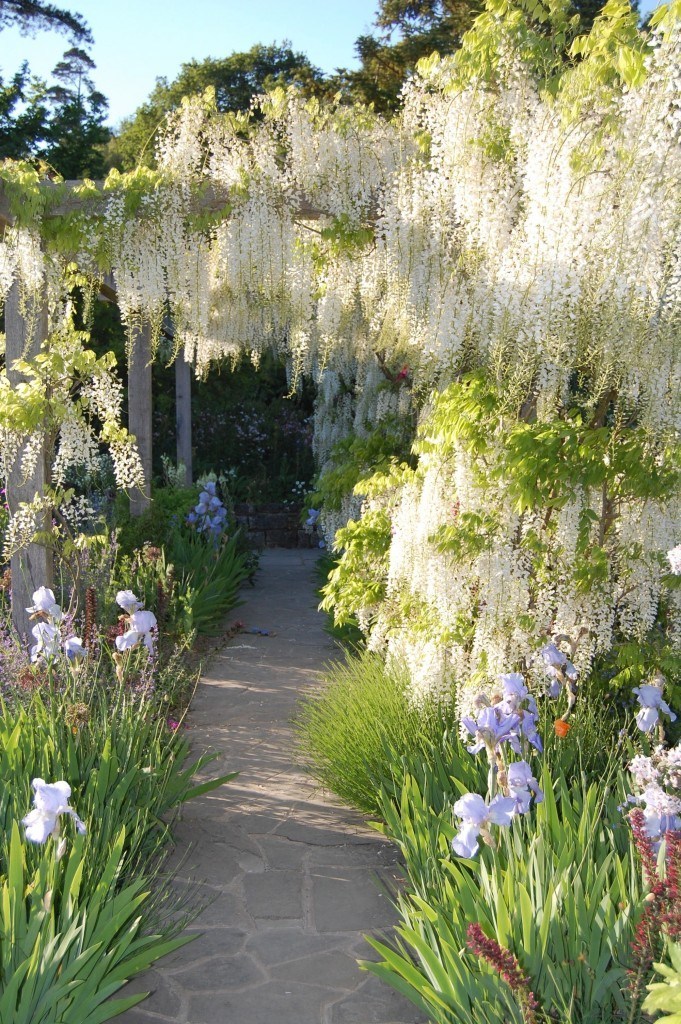
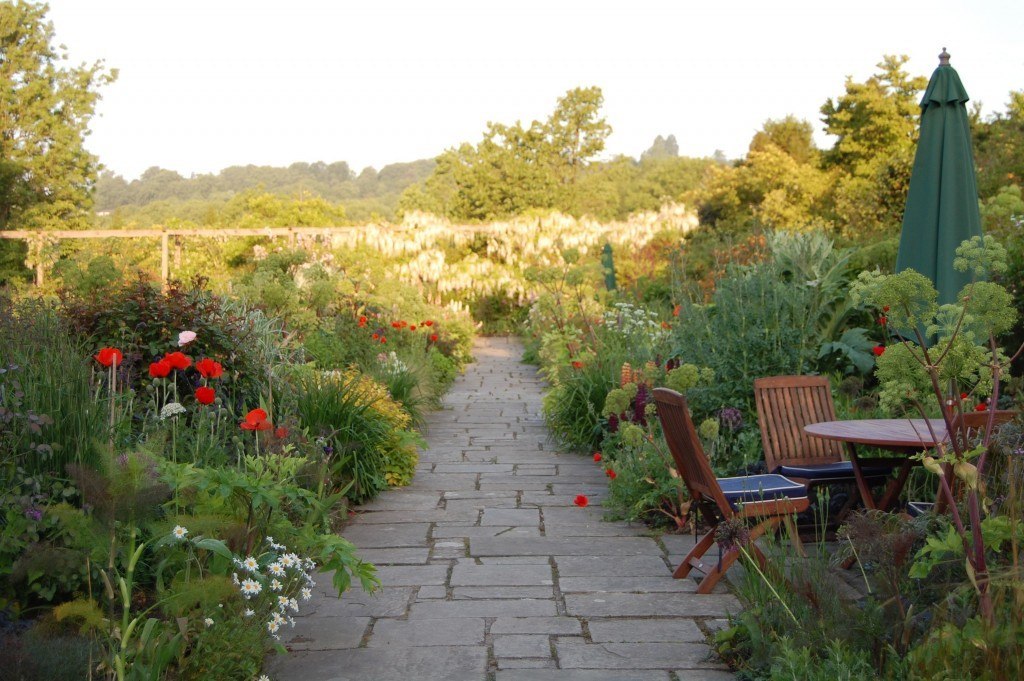
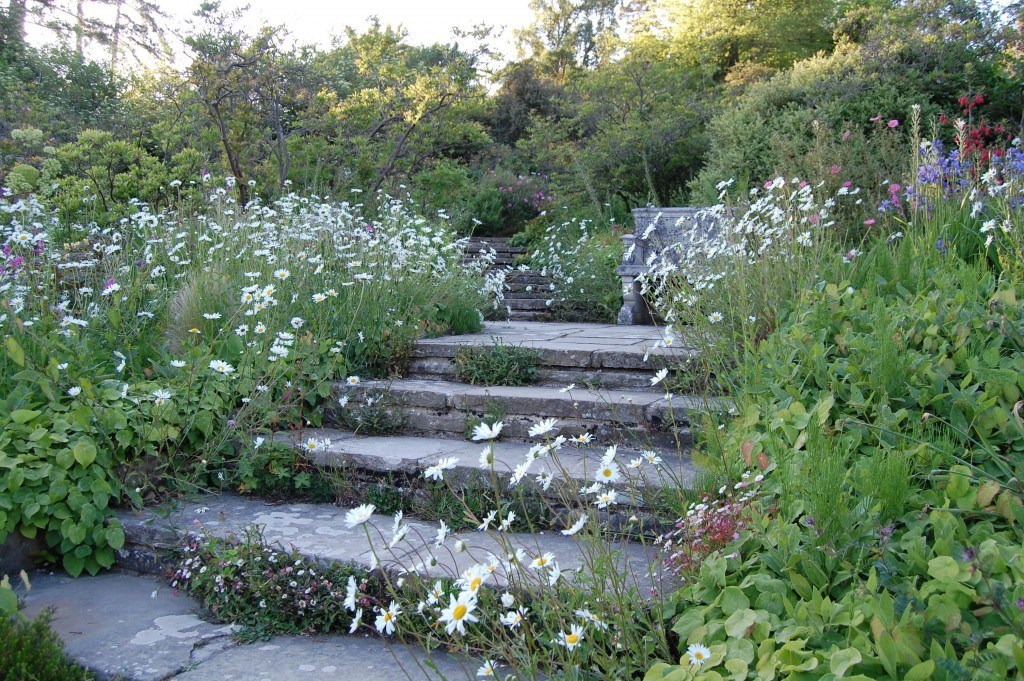
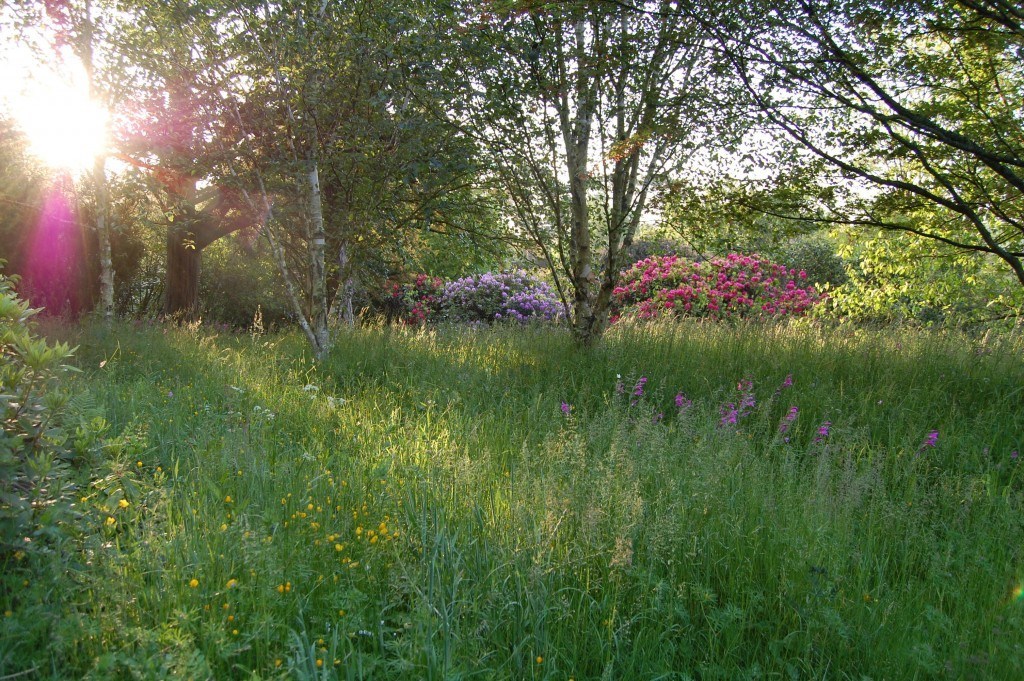
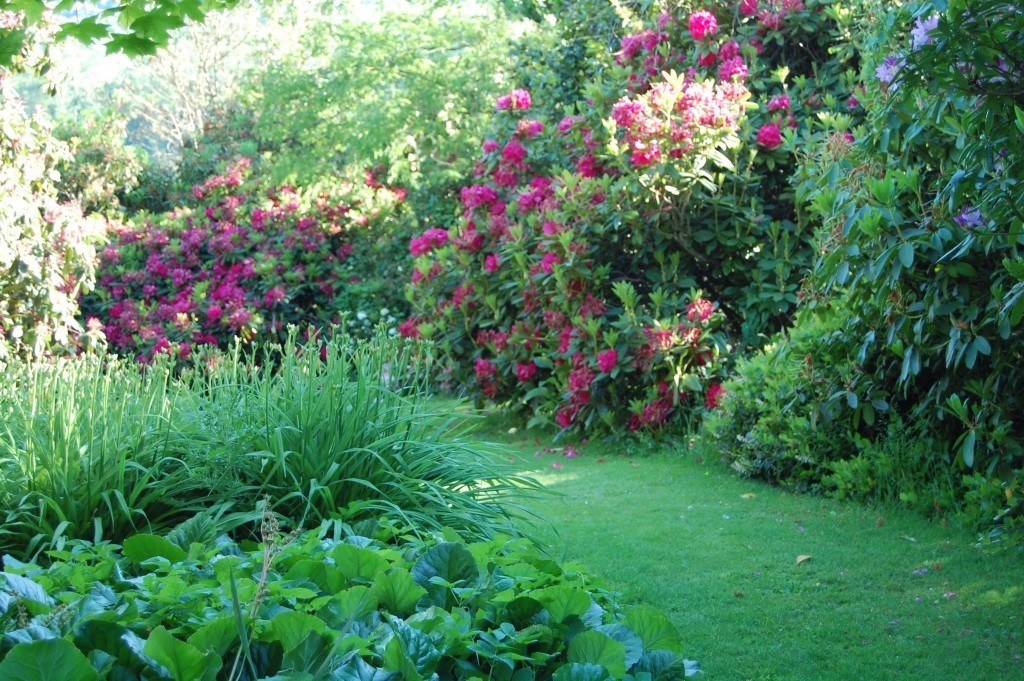
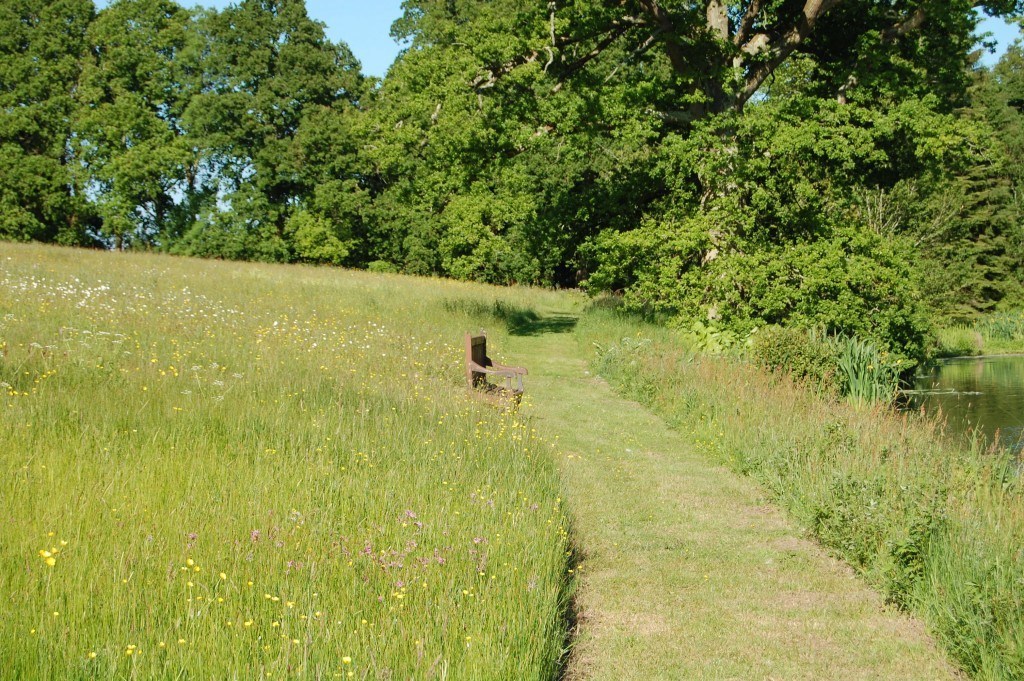 The meadows at Gravetye Manor are spectacular (above and below). Robinson was also a pioneer in replacing mowed turf with wild meadows, and in naturalizing bulbs. When I arrived, the spring bulbs had faded, and the summer wildflowers were in their glory.
The meadows at Gravetye Manor are spectacular (above and below). Robinson was also a pioneer in replacing mowed turf with wild meadows, and in naturalizing bulbs. When I arrived, the spring bulbs had faded, and the summer wildflowers were in their glory.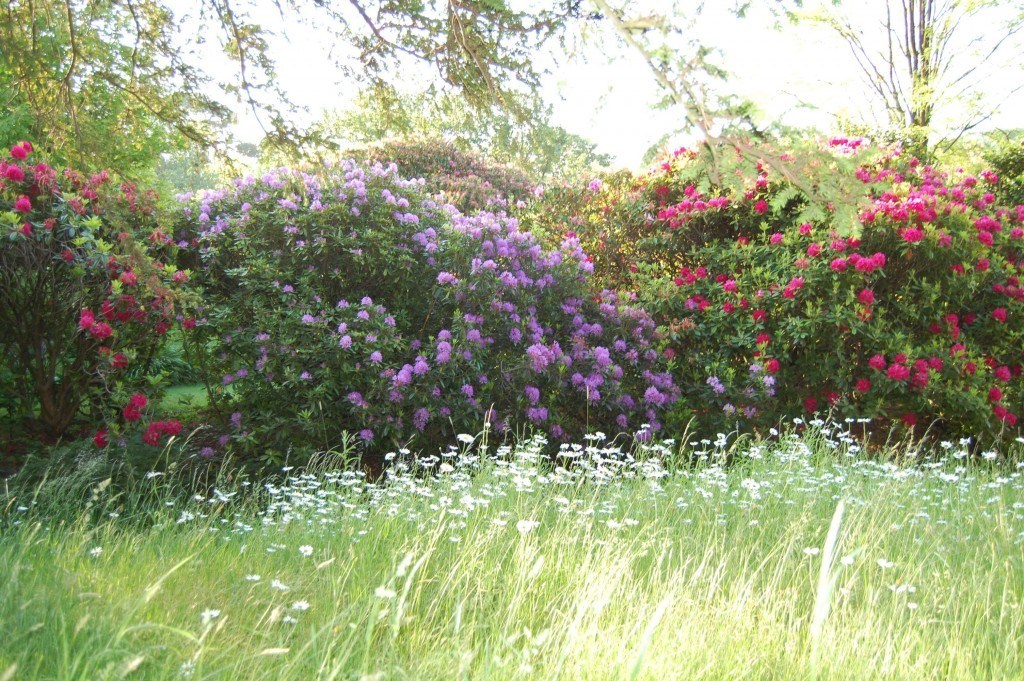
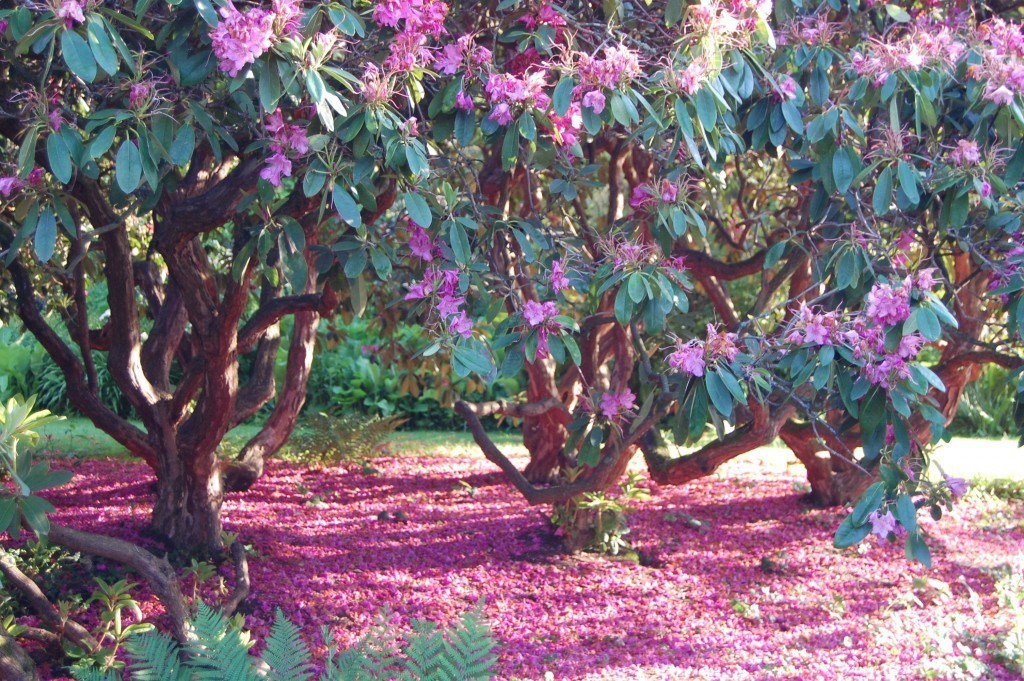
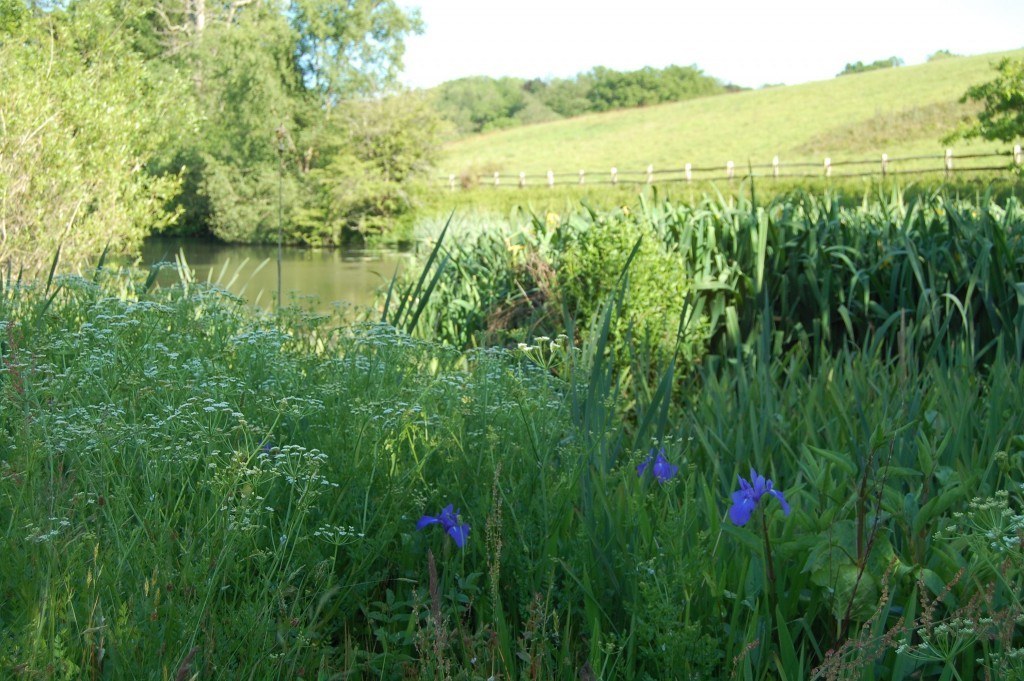
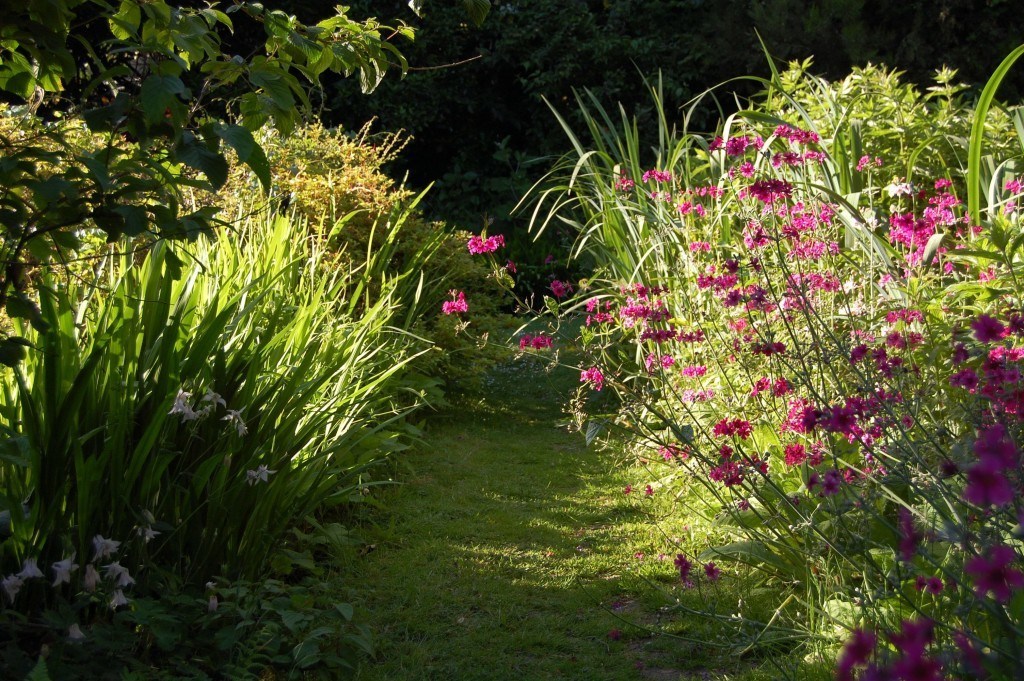
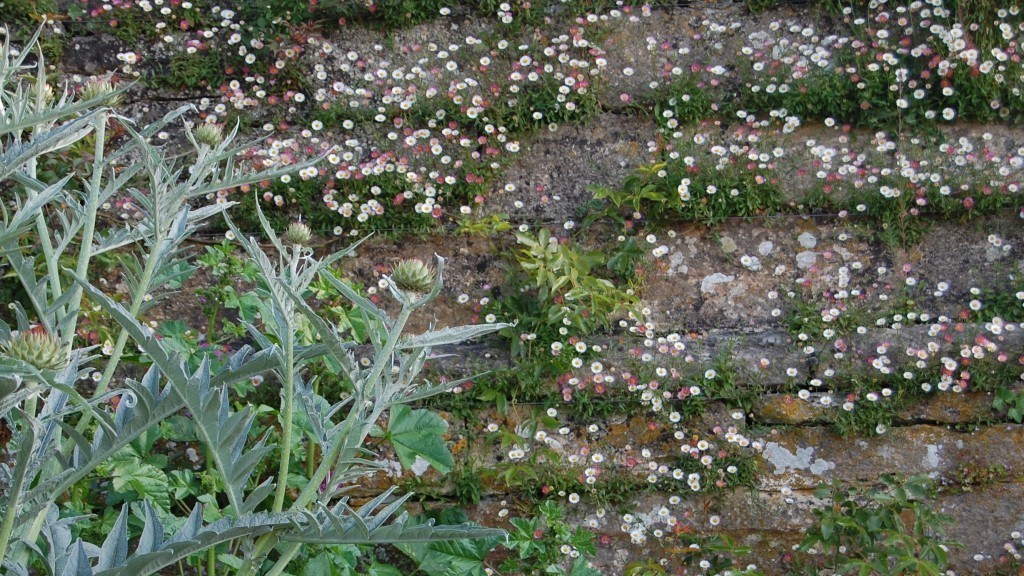
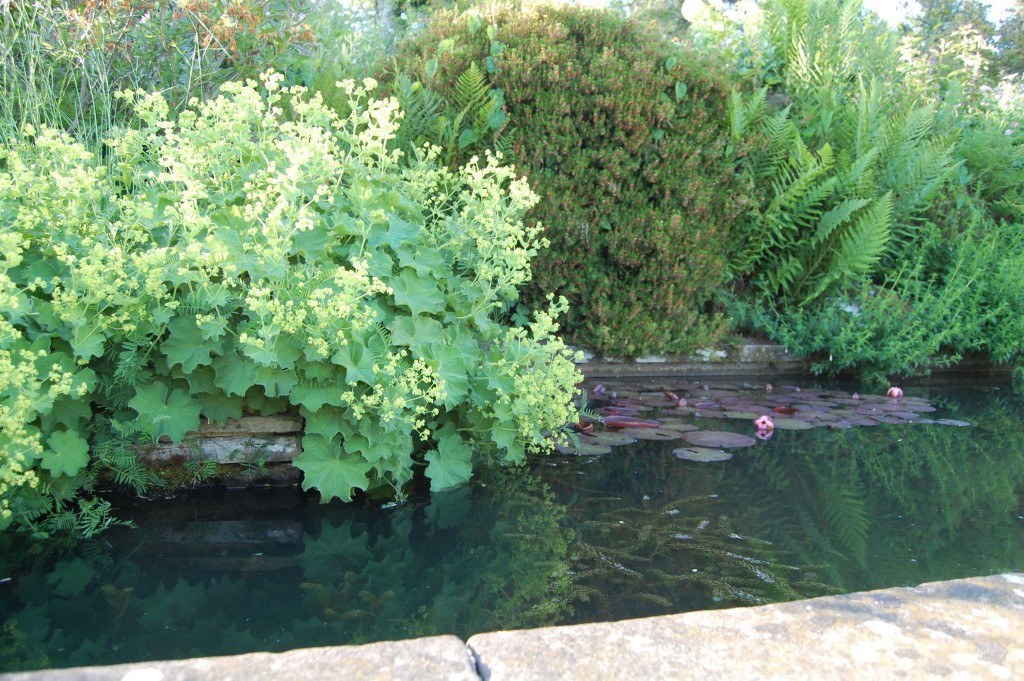
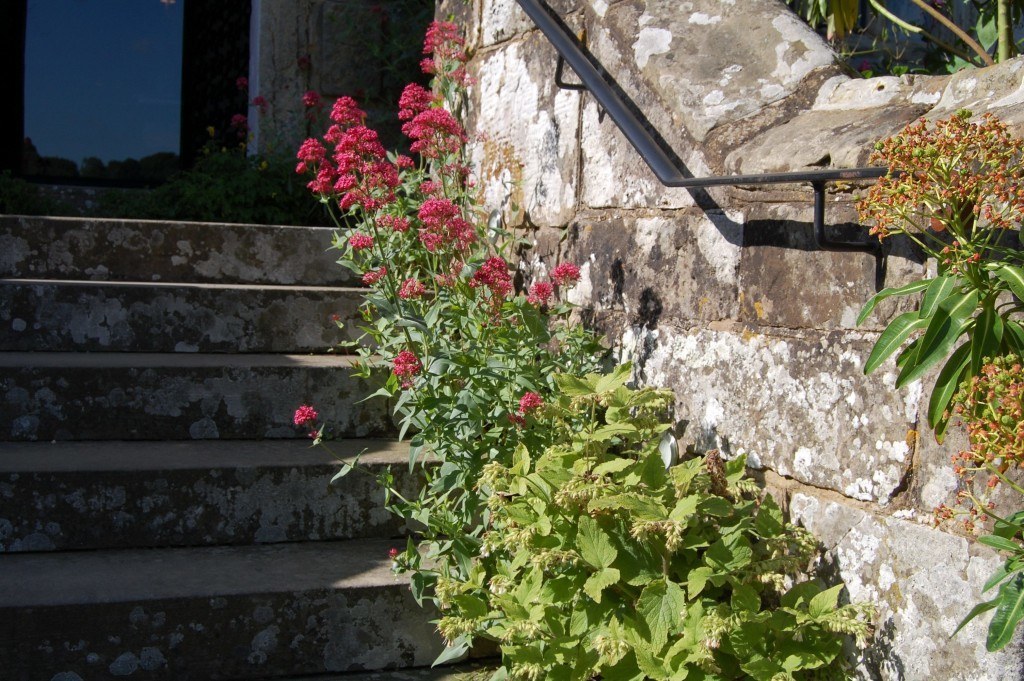
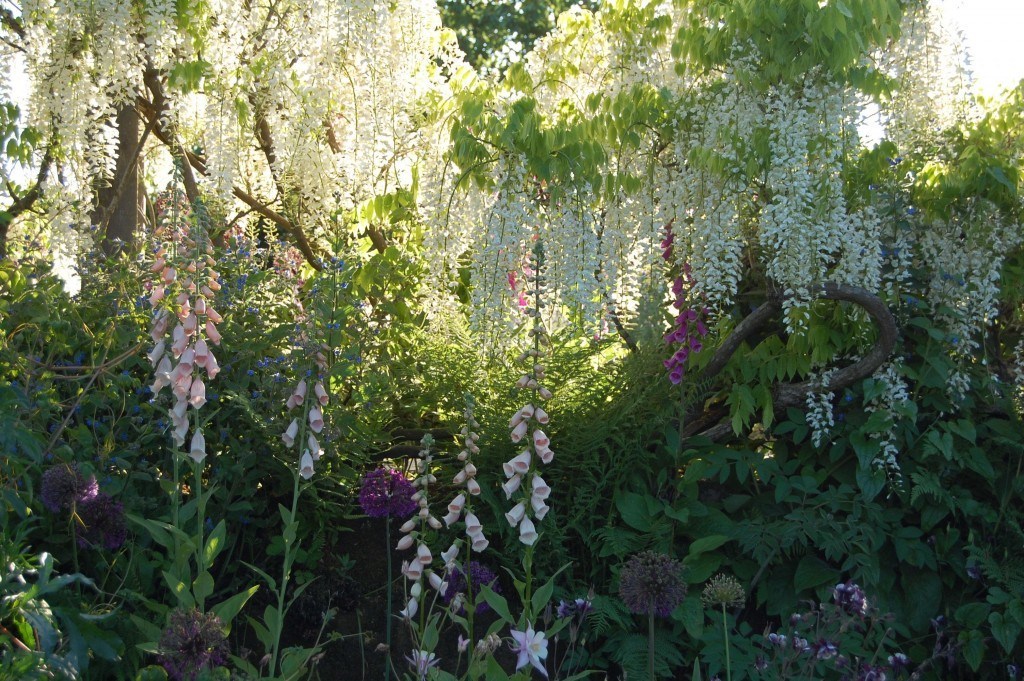
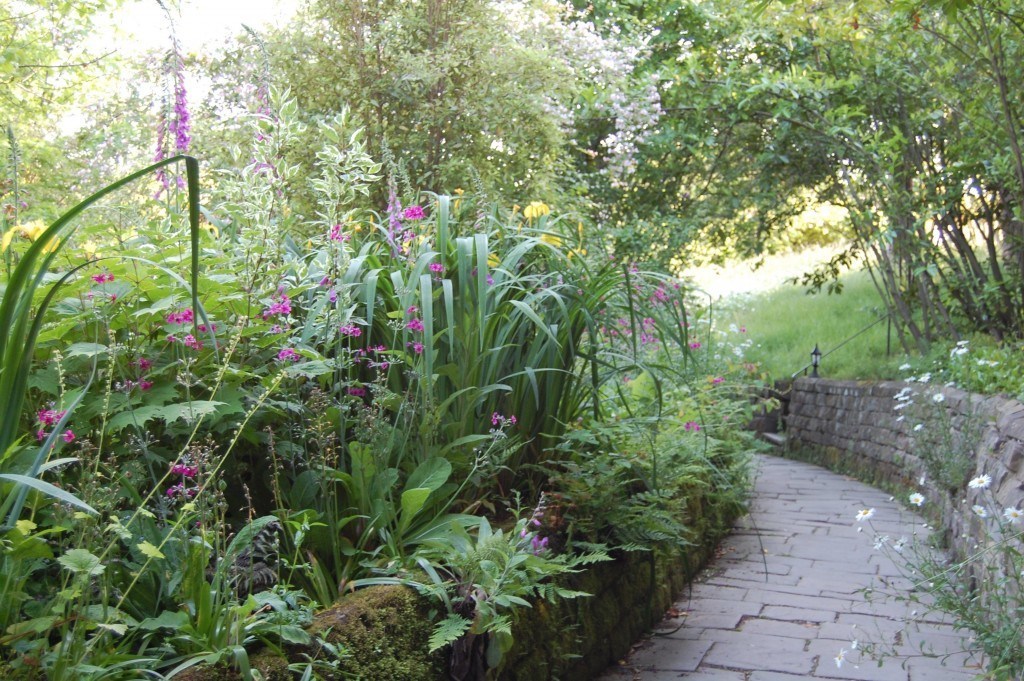
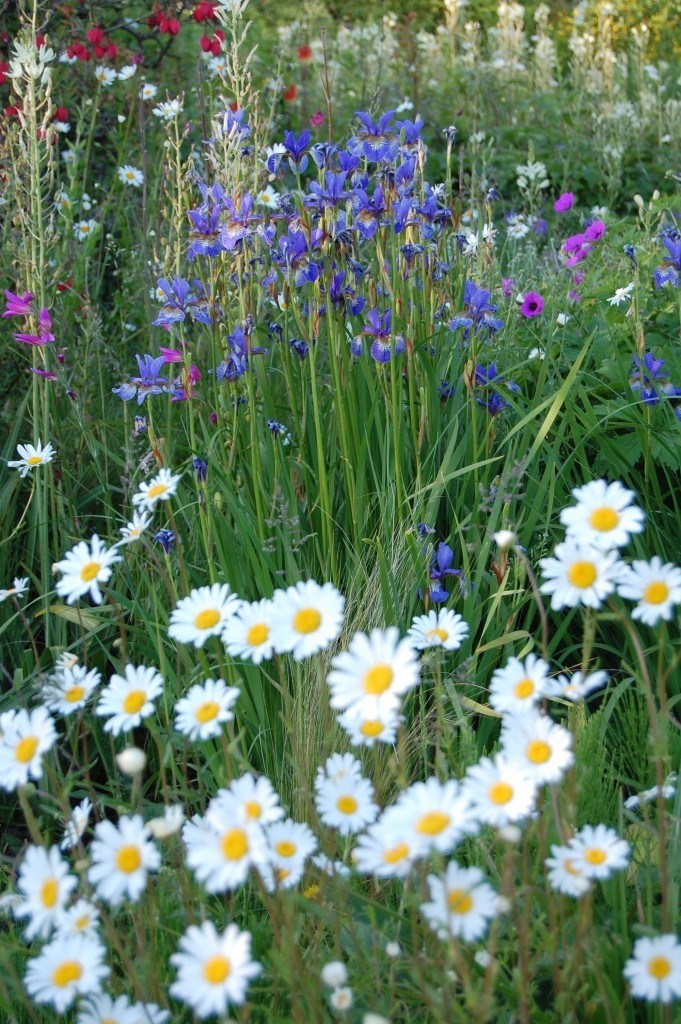
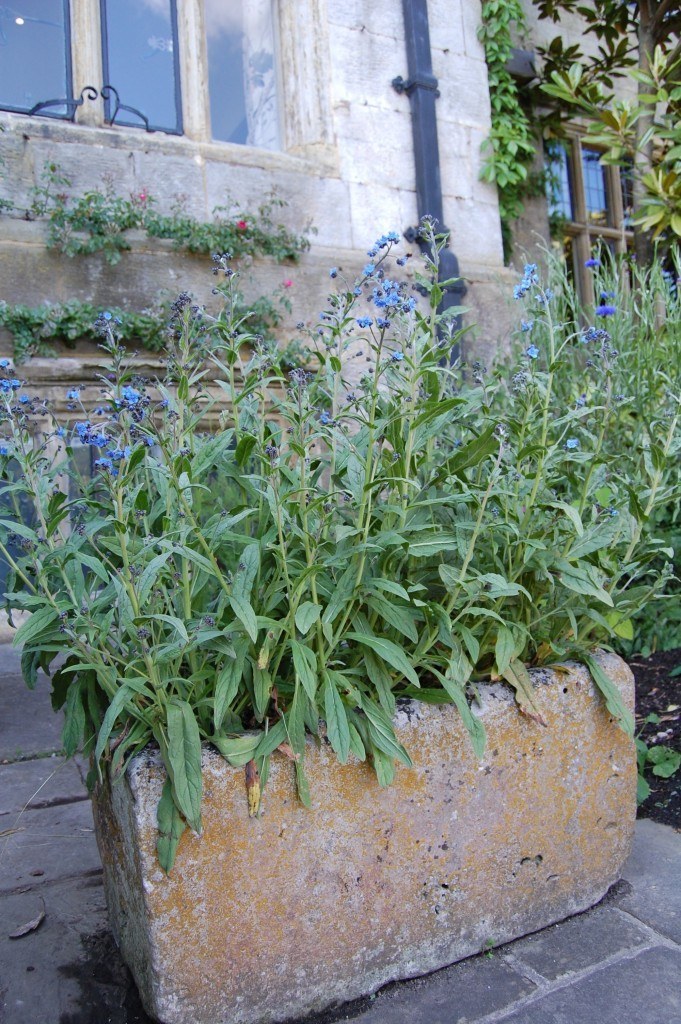
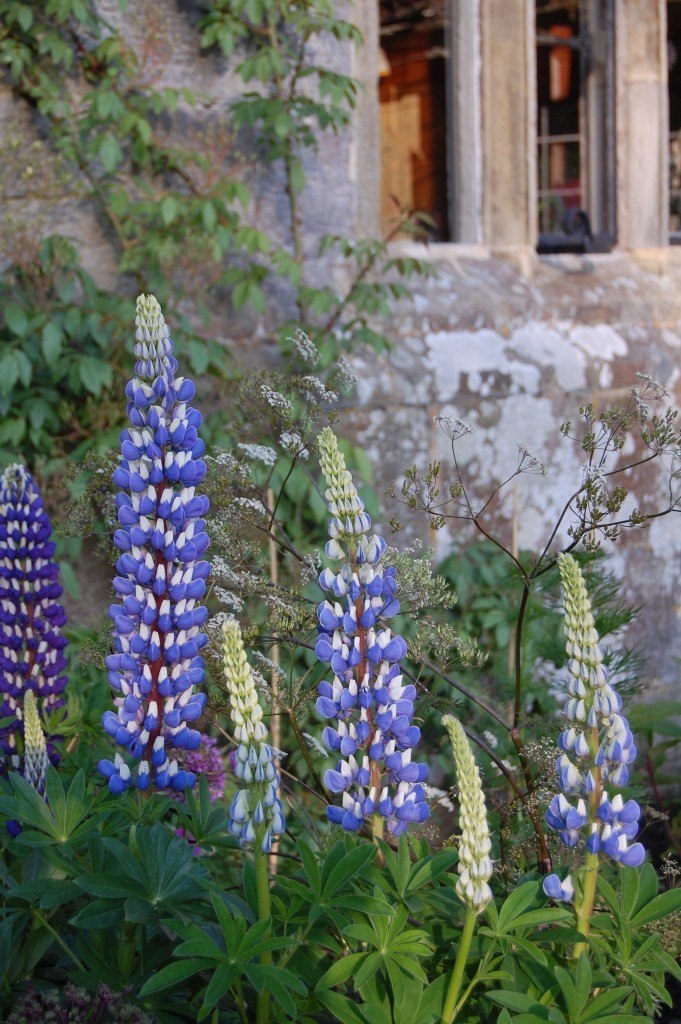

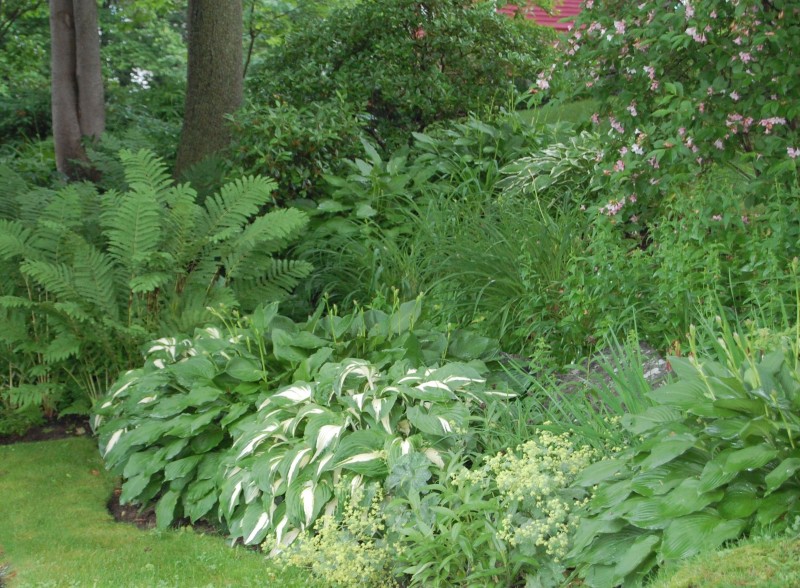
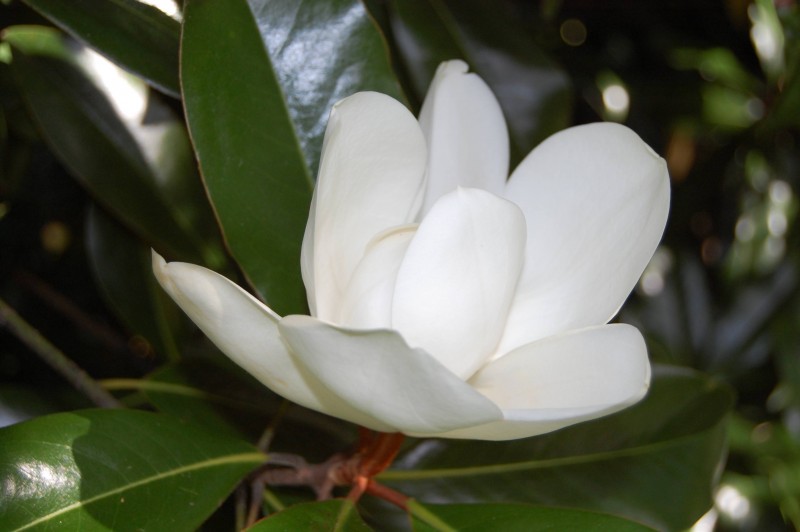
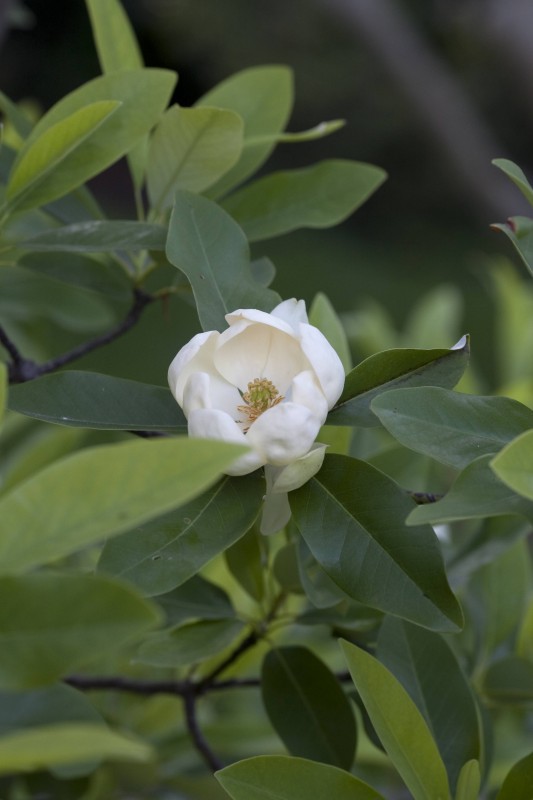
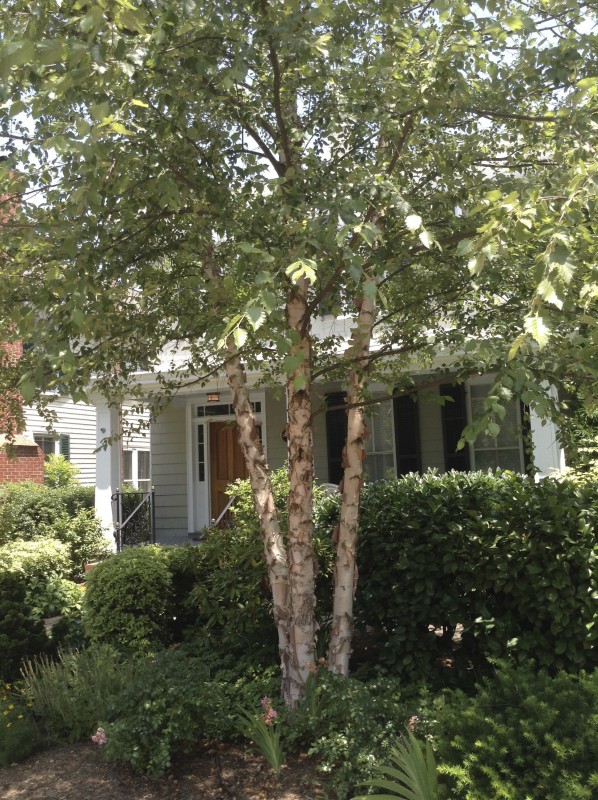

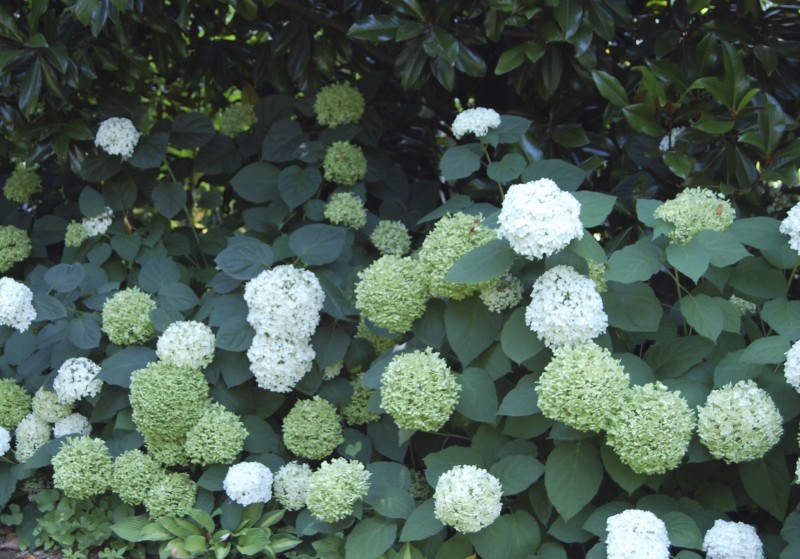
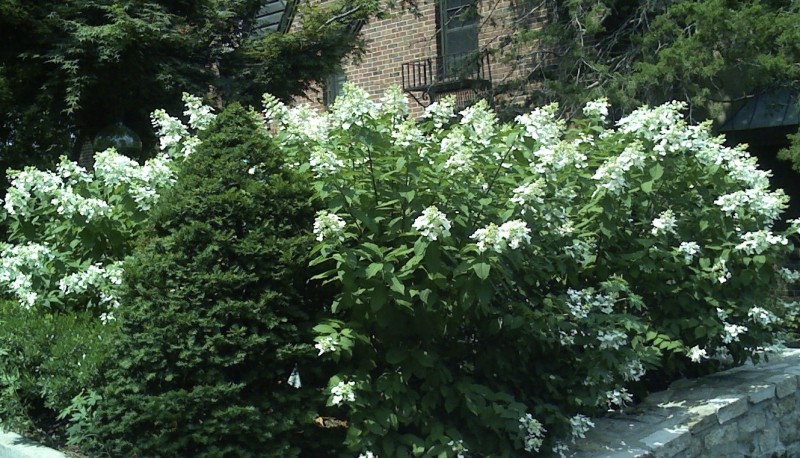
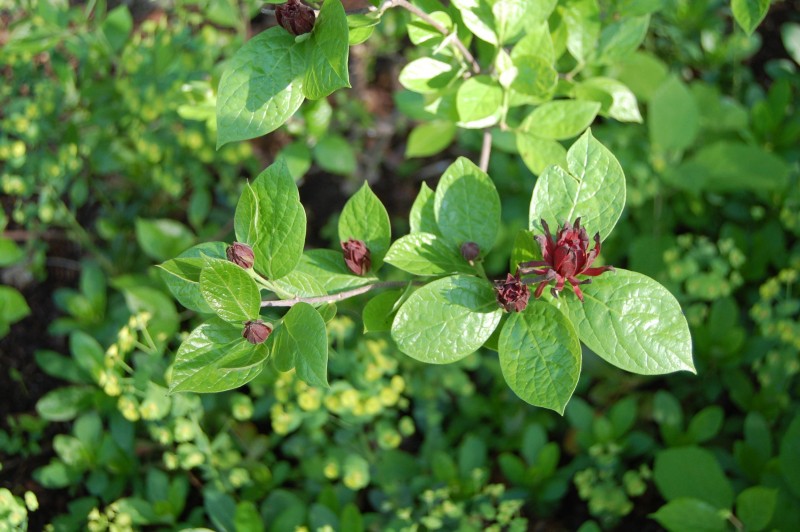
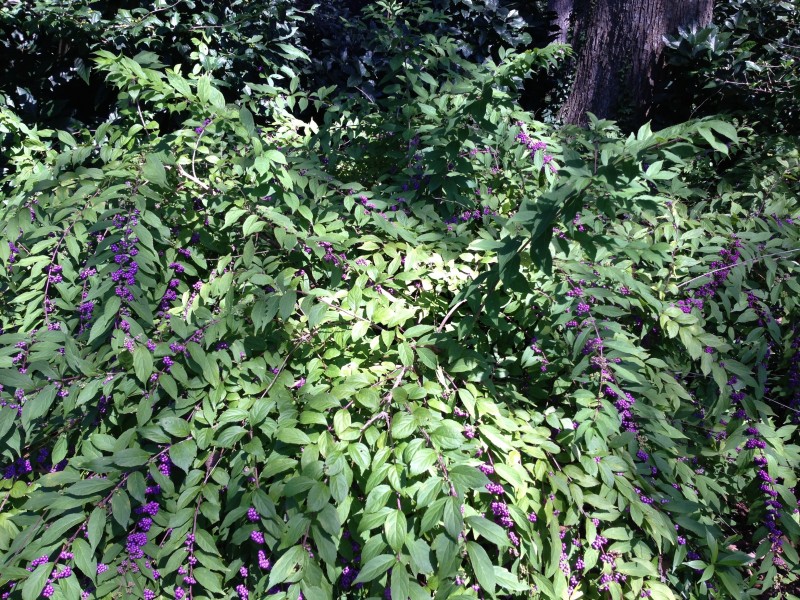

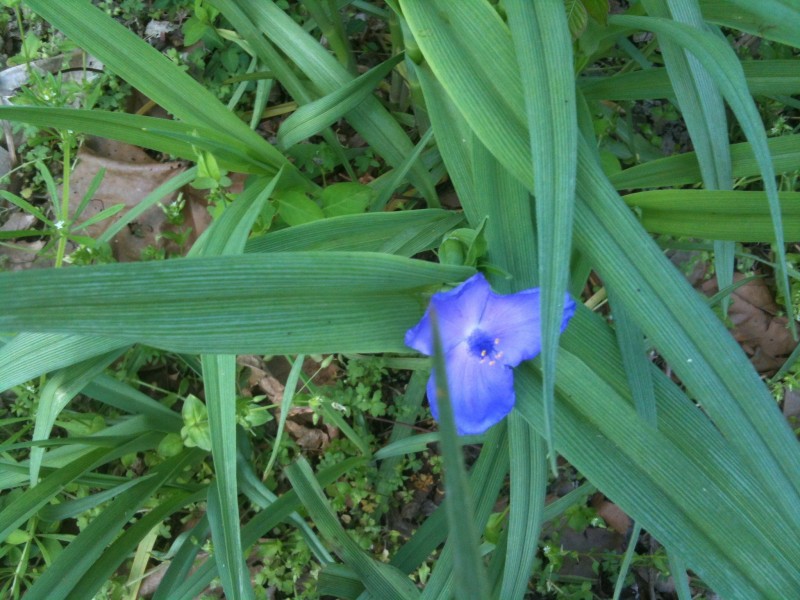
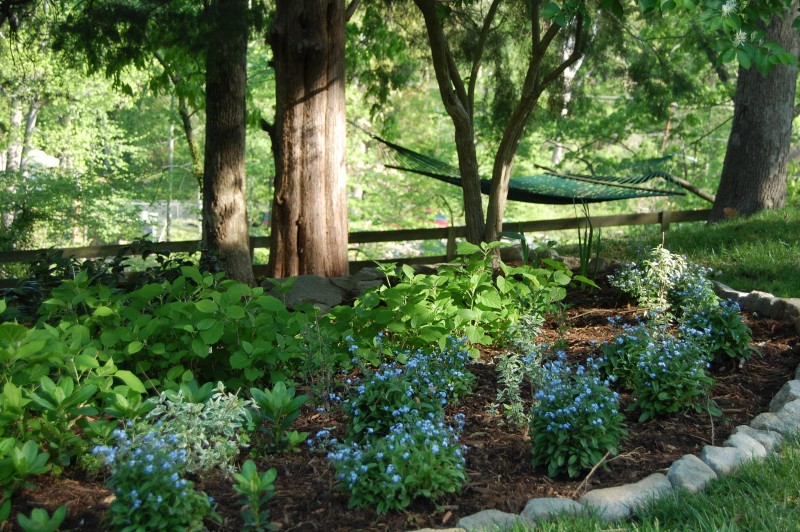
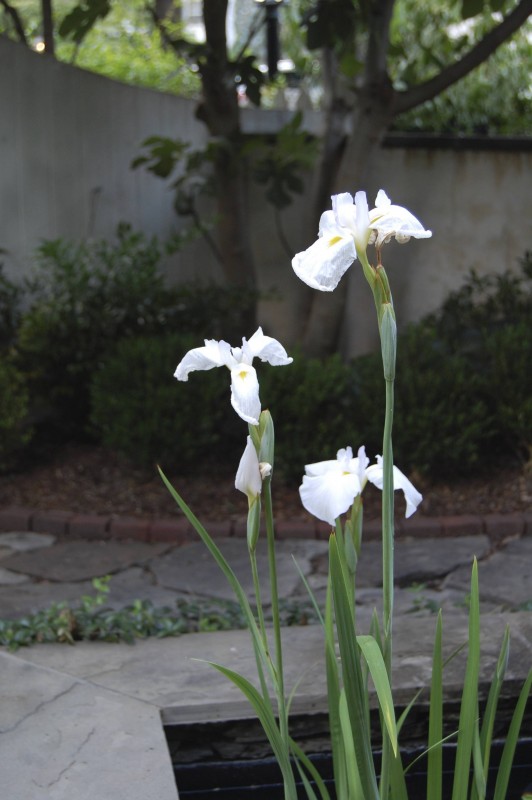
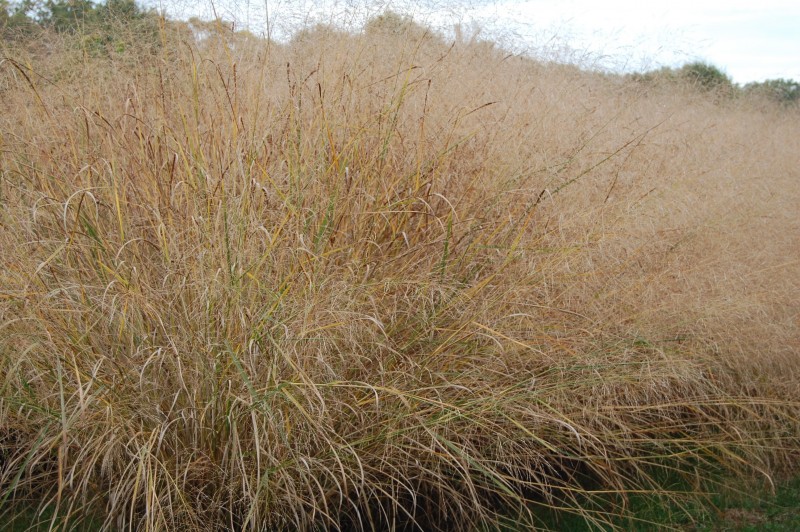
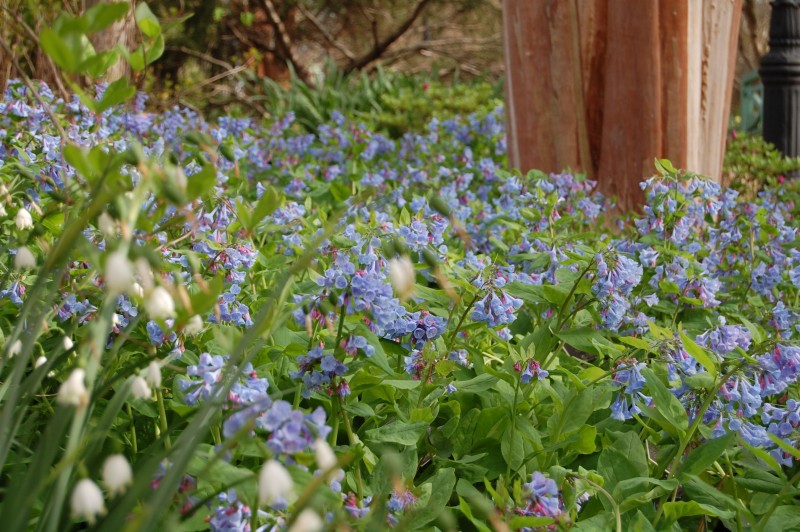 Mertensia virginica (Virginia Bluebell) is native to Virginia.
Mertensia virginica (Virginia Bluebell) is native to Virginia.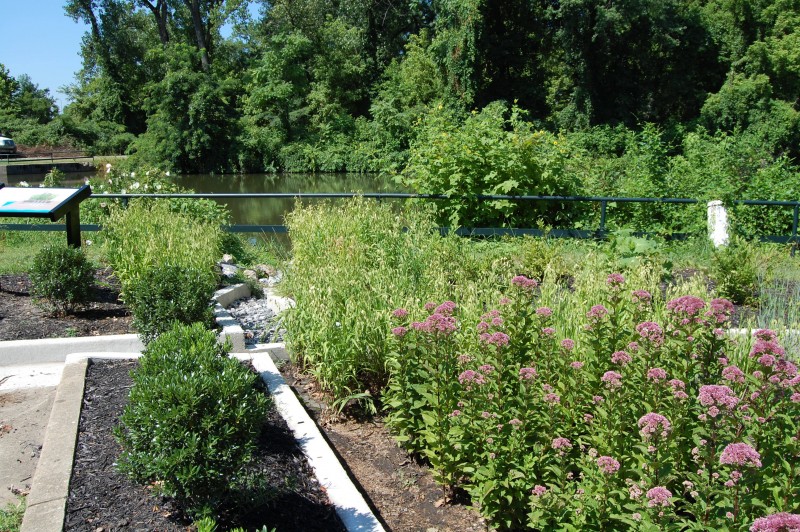 This rain garden (installed by
This rain garden (installed by 
